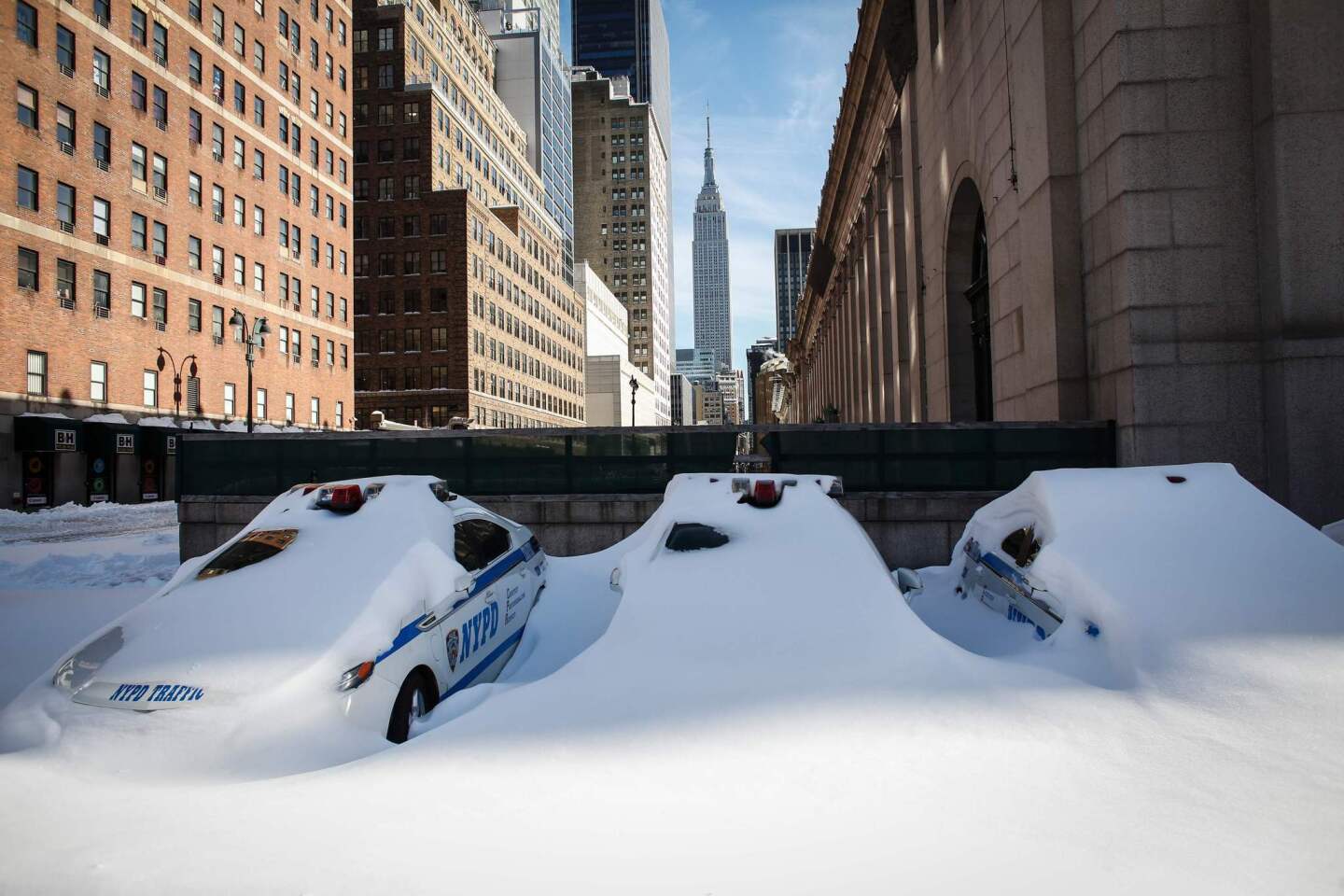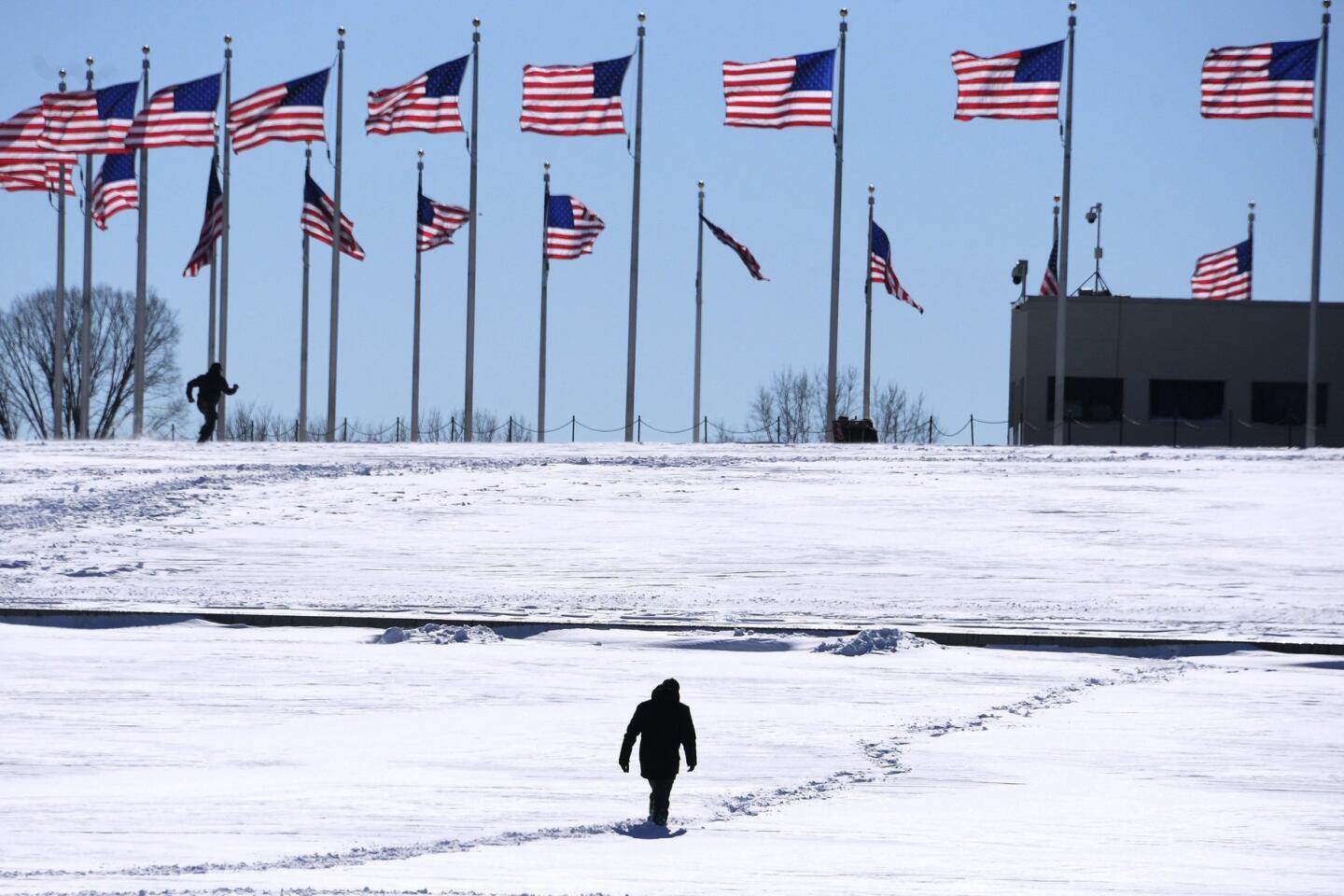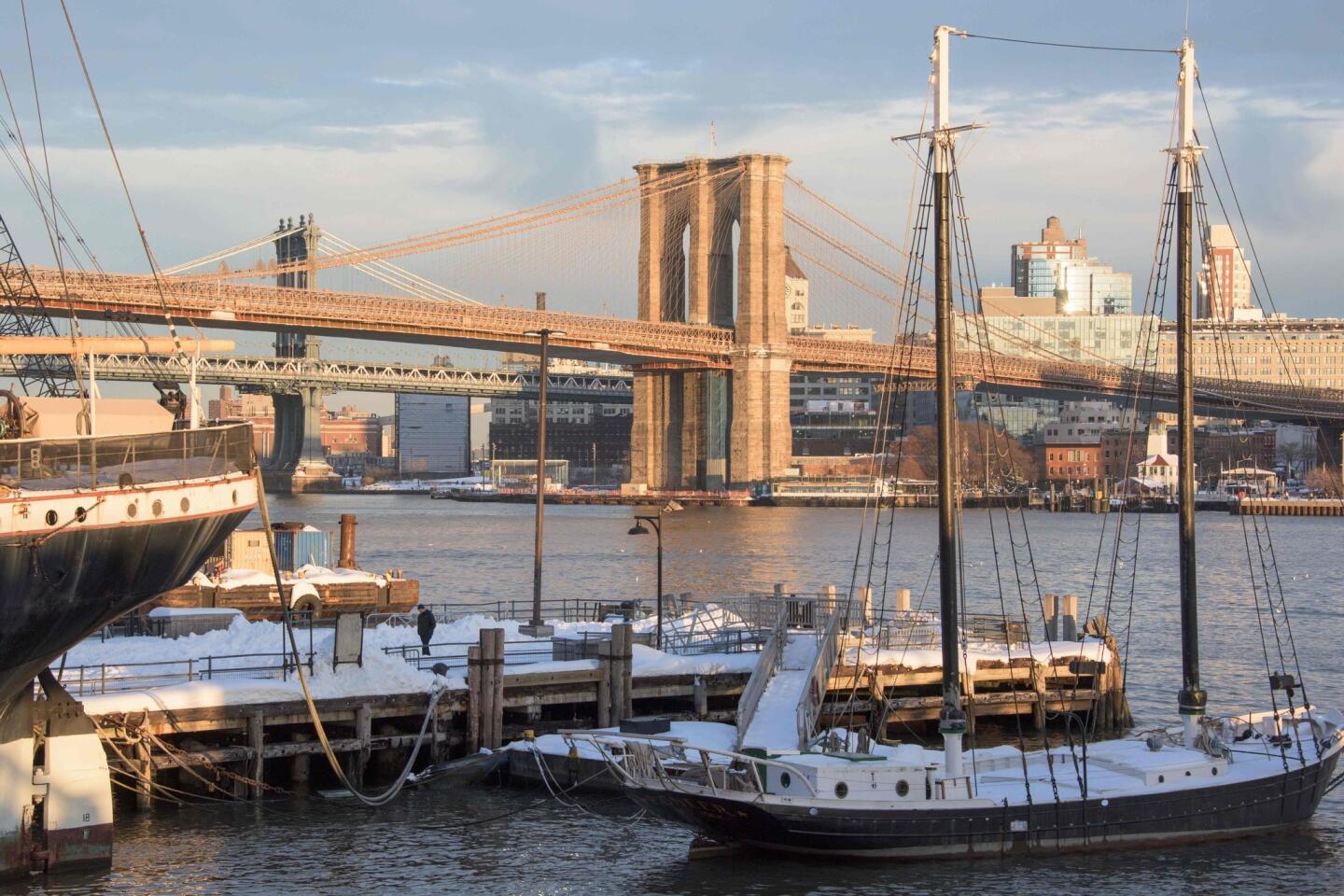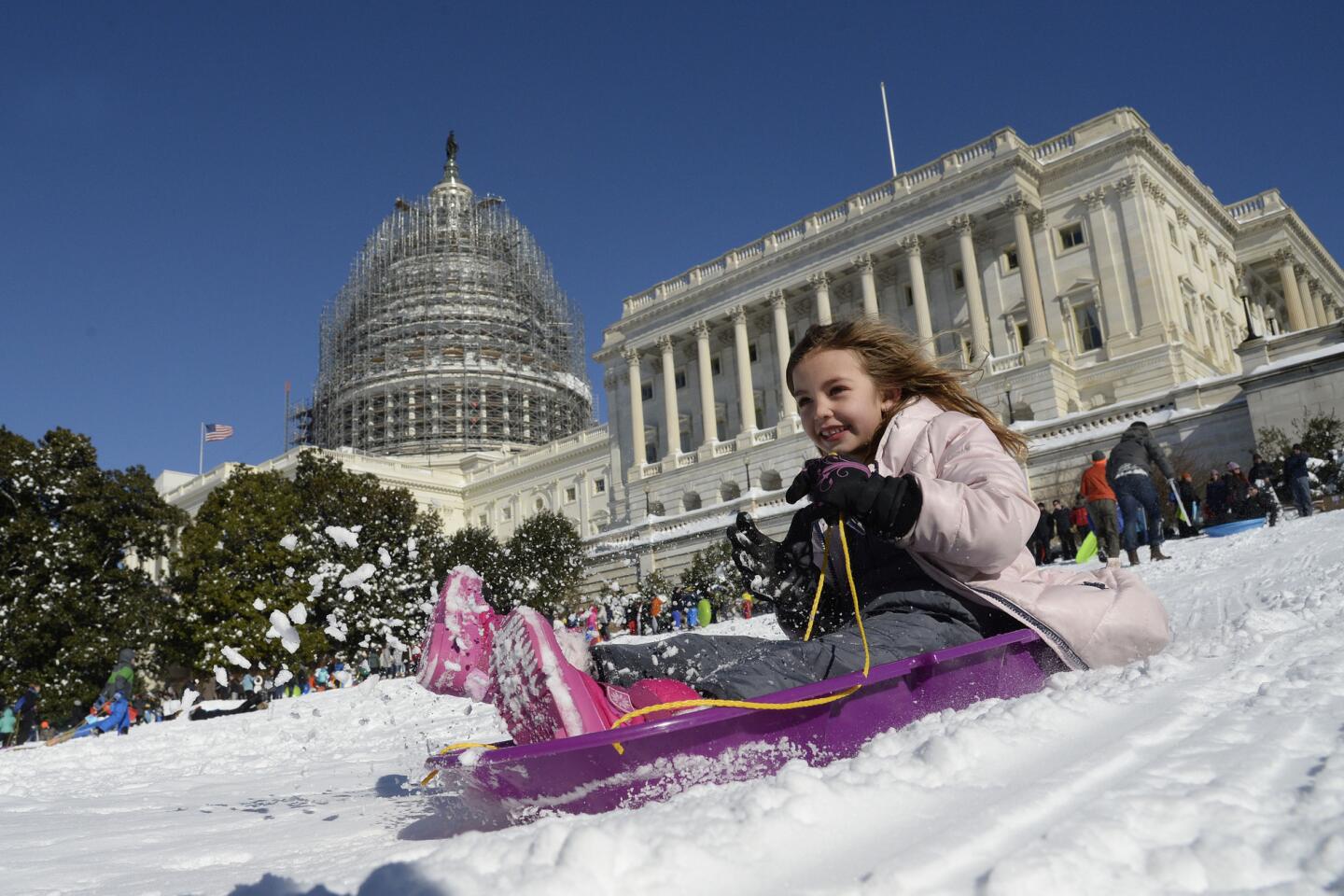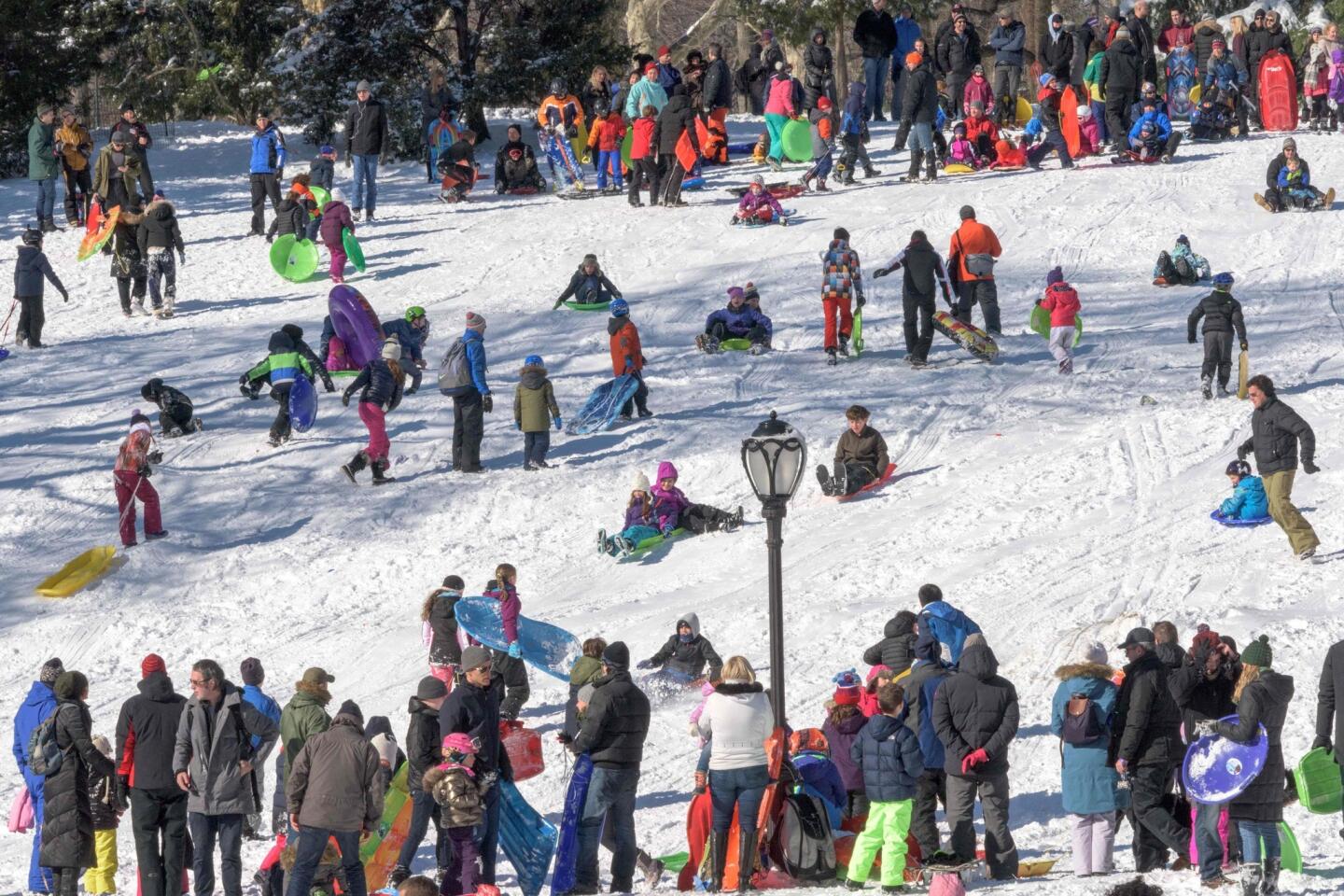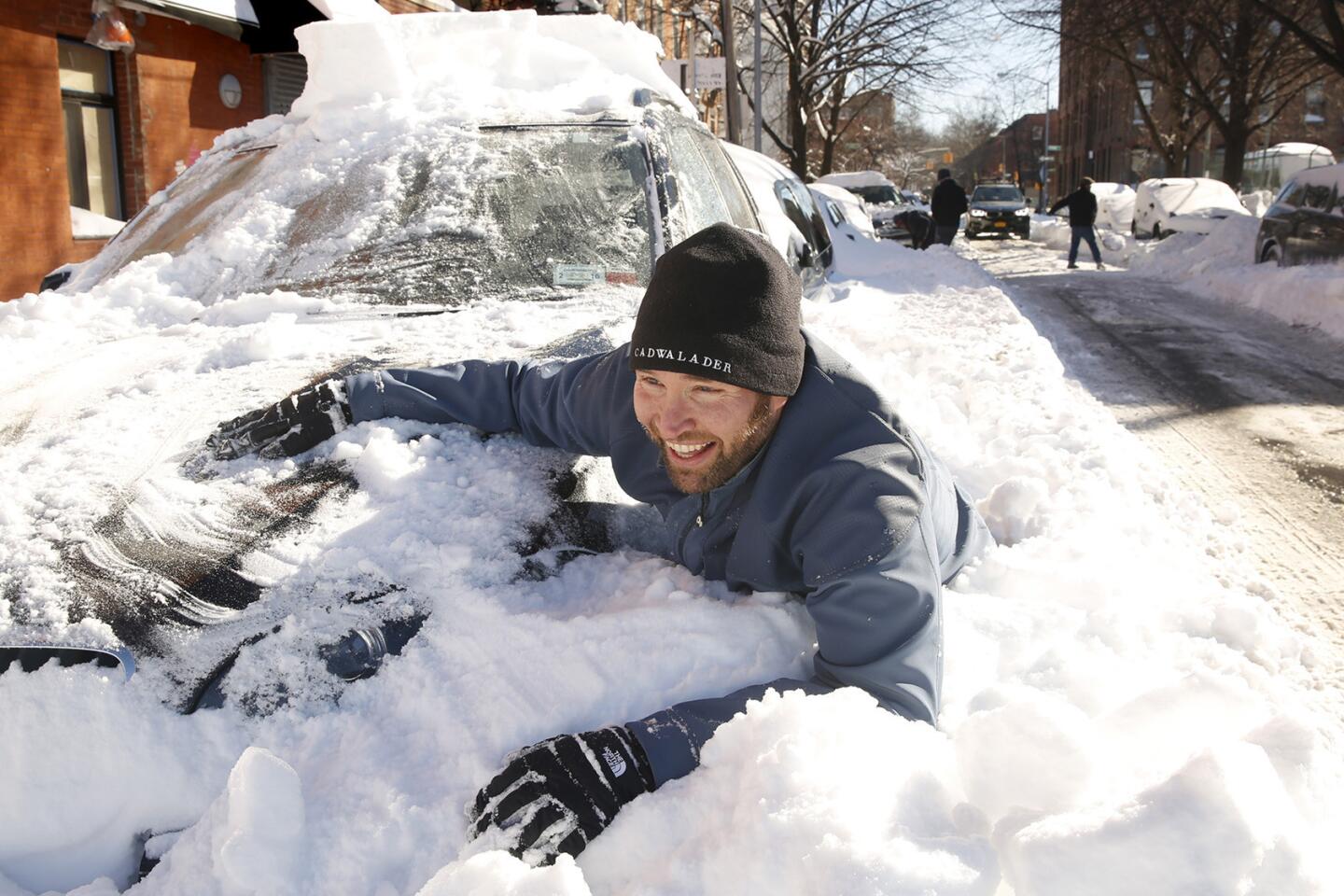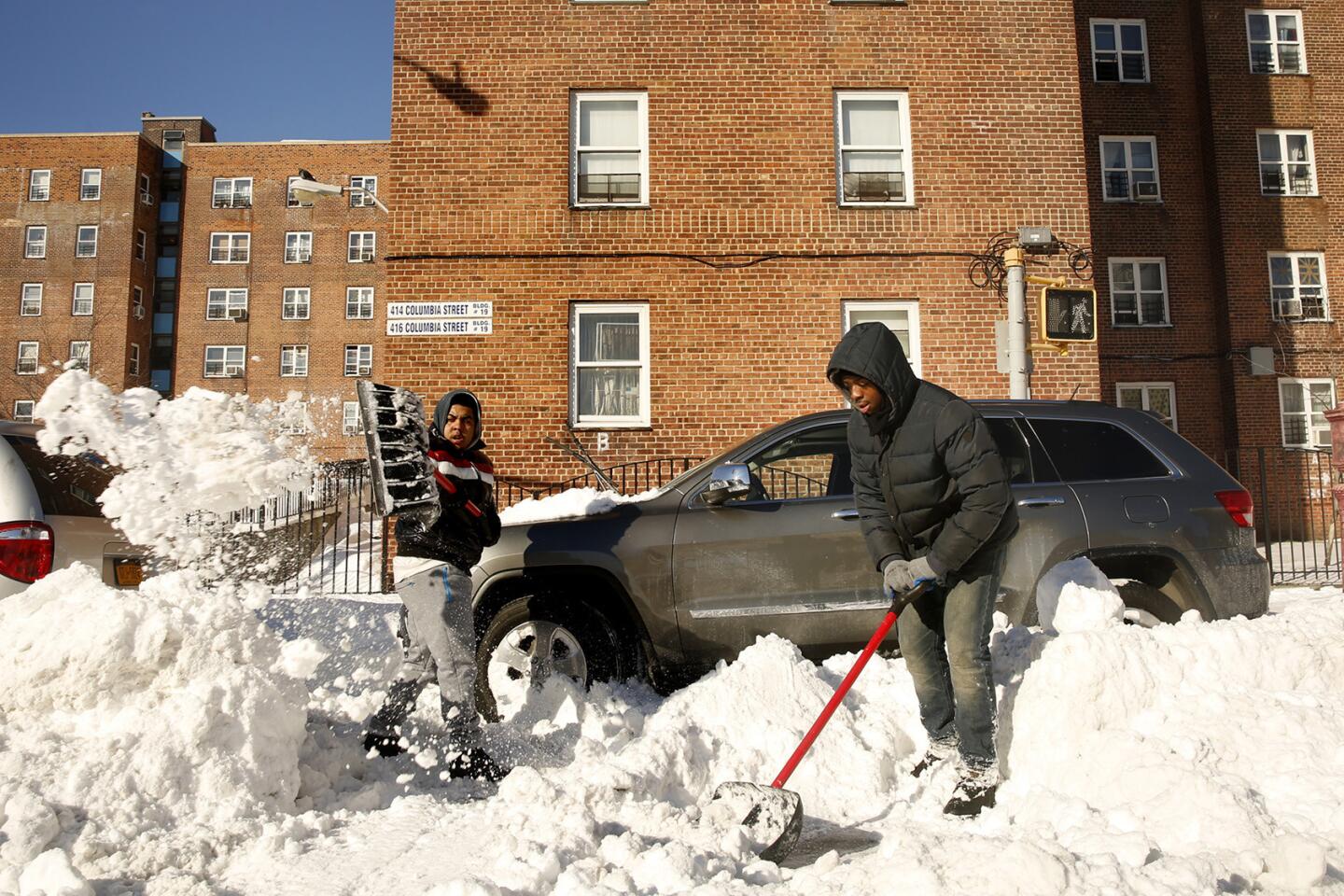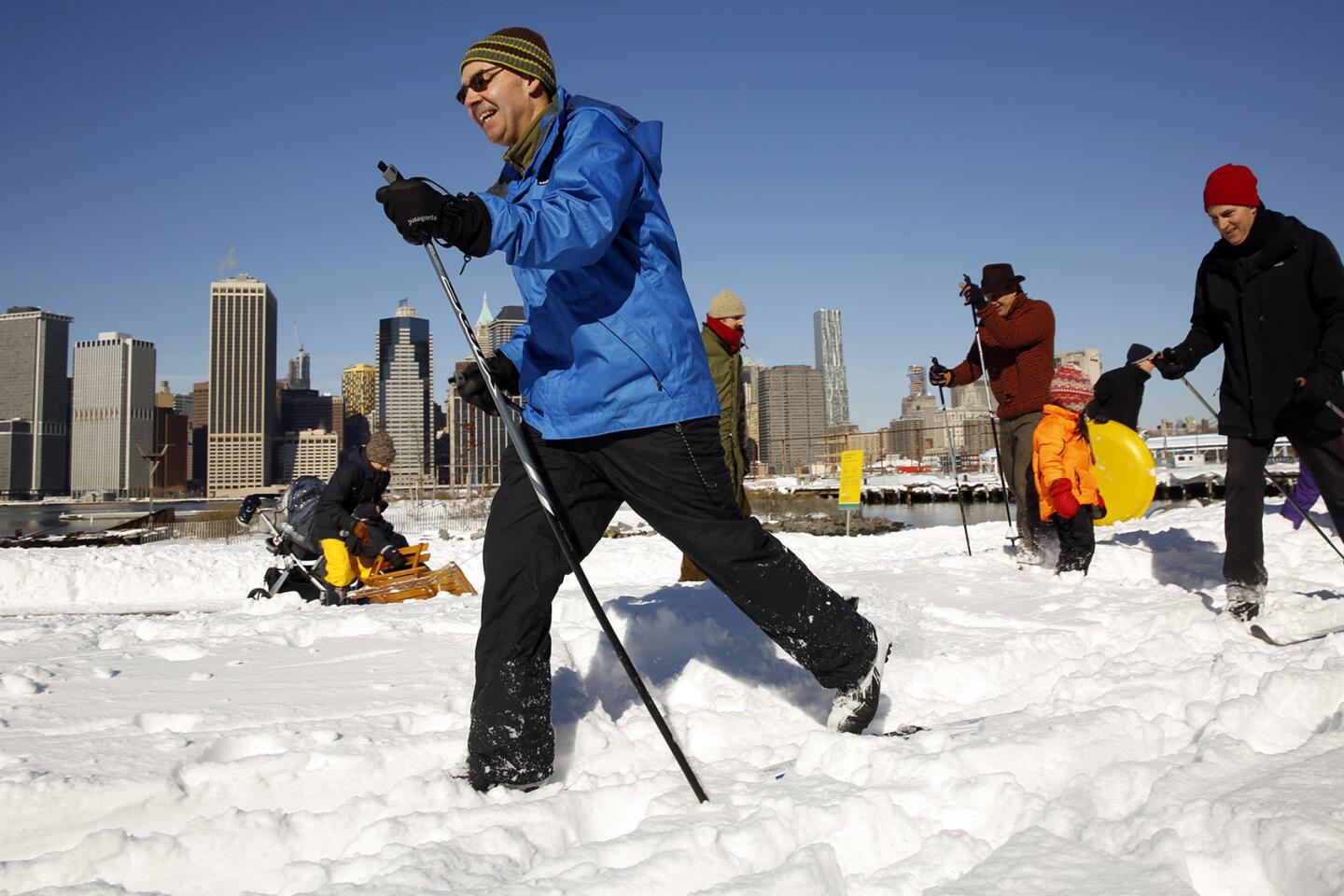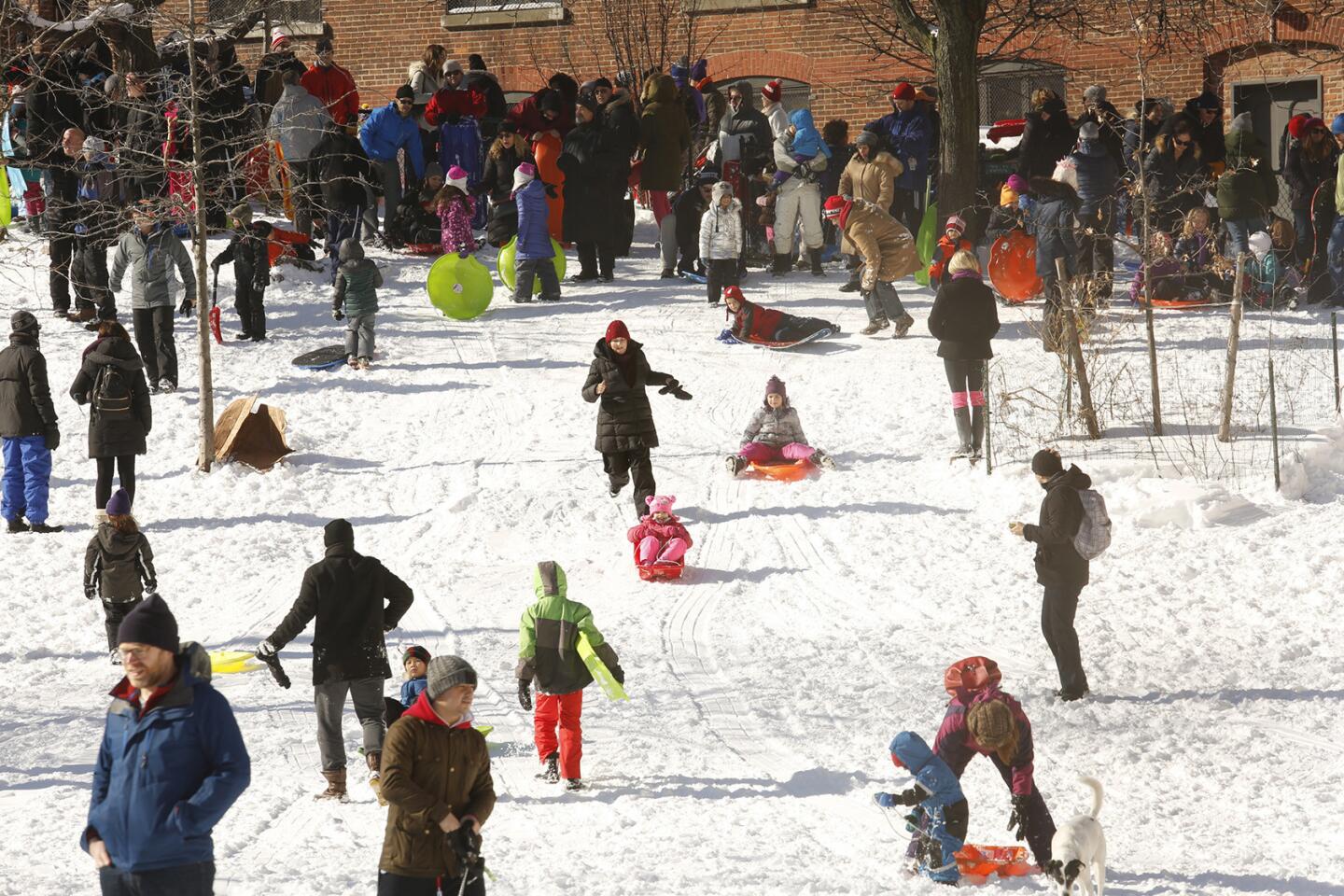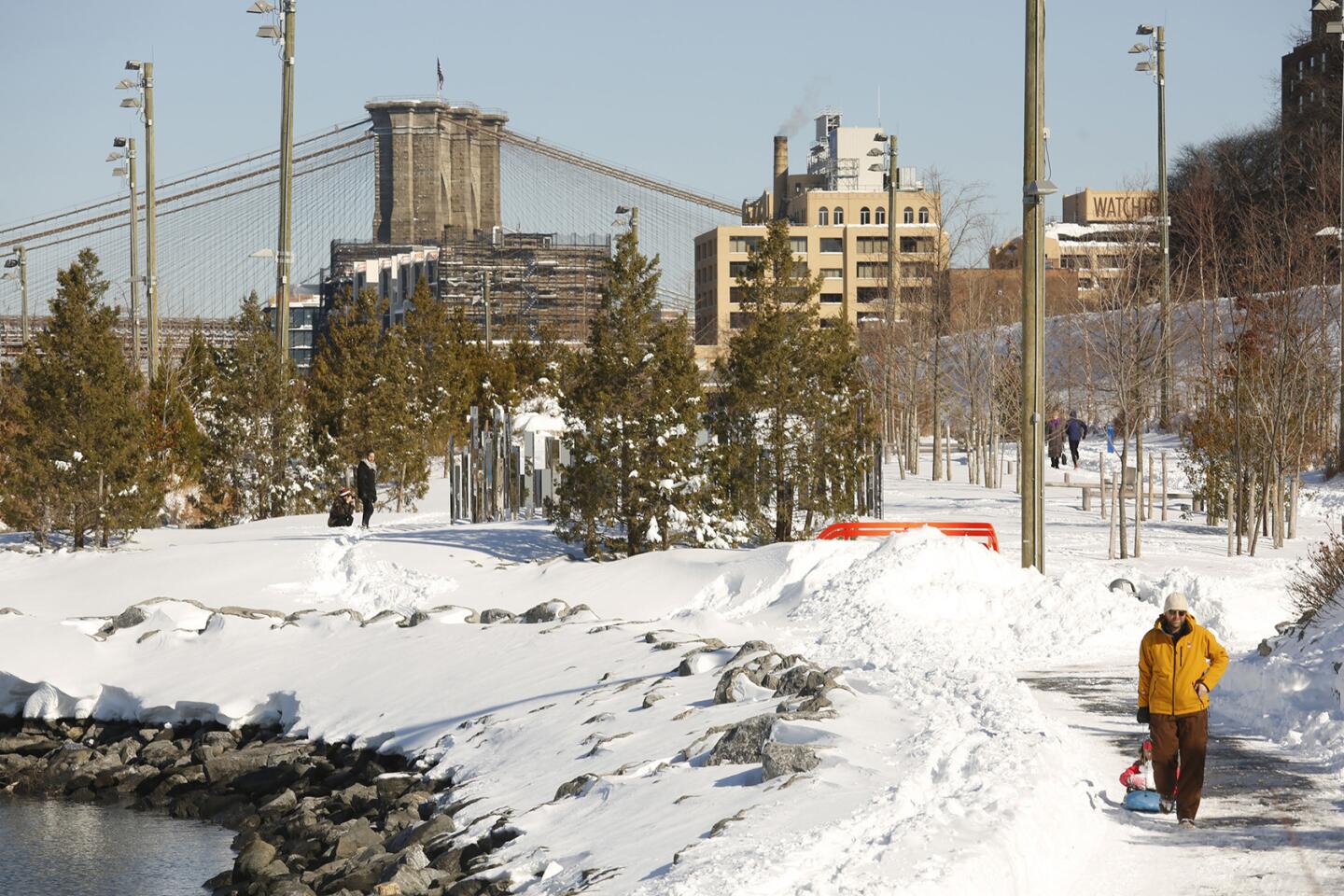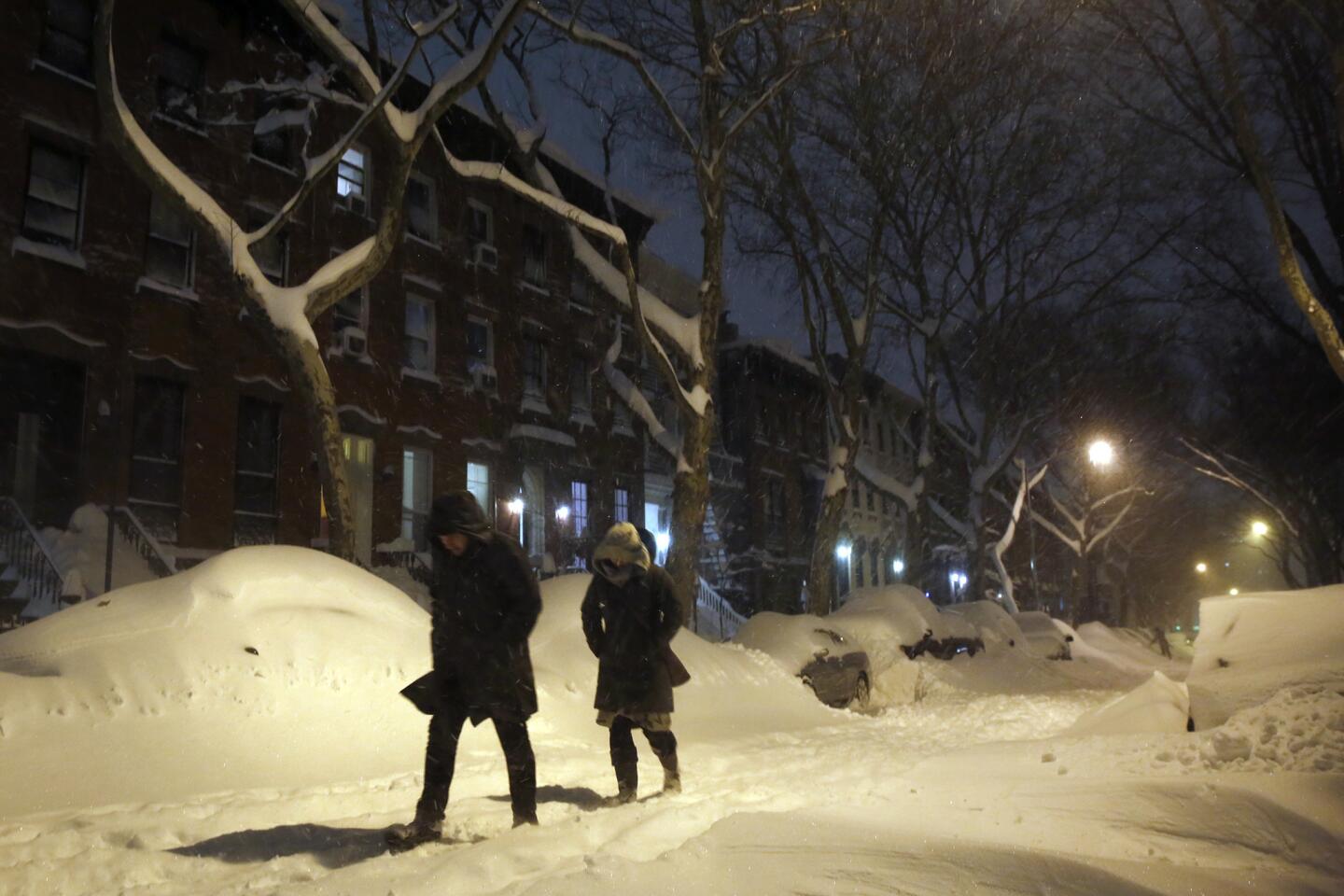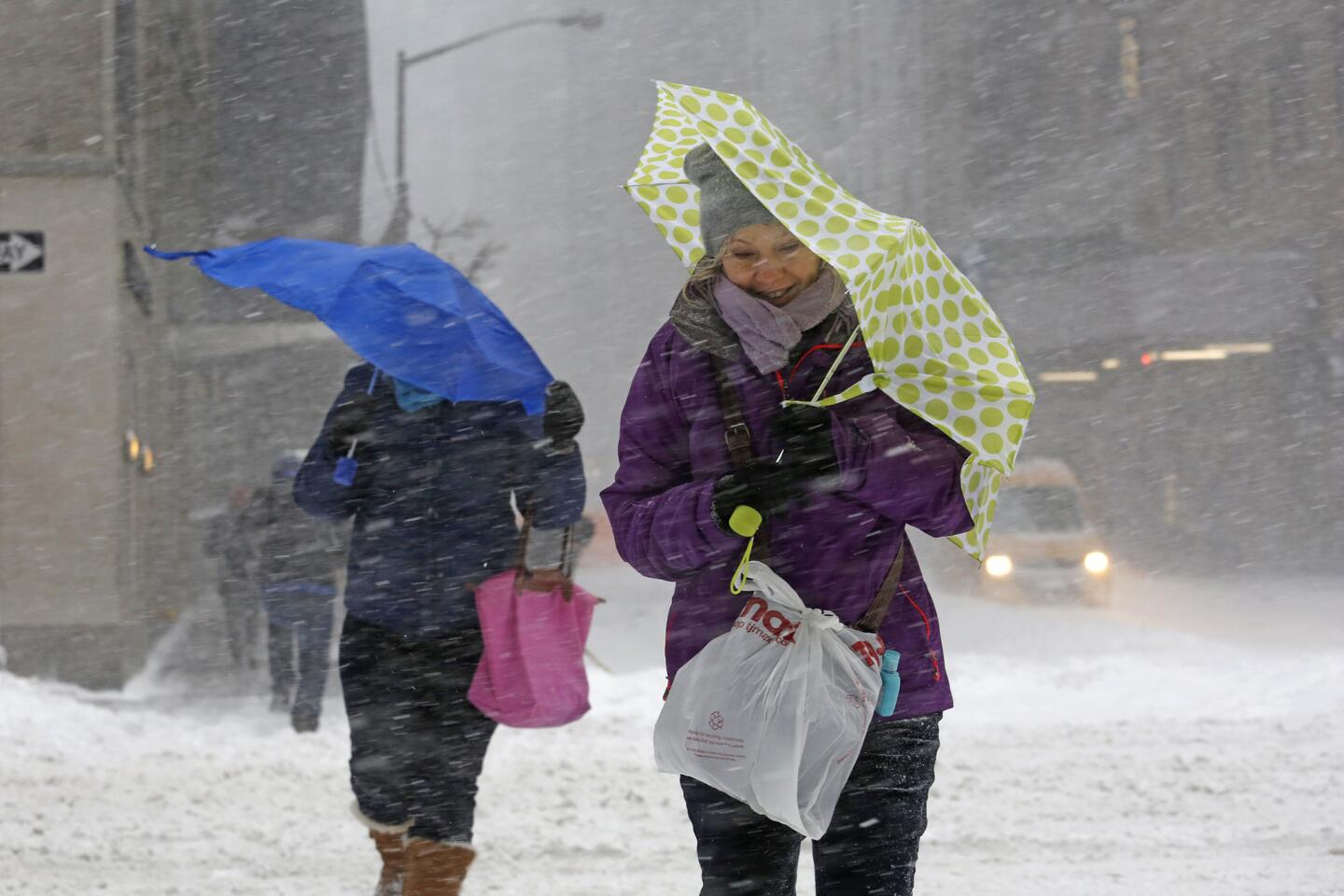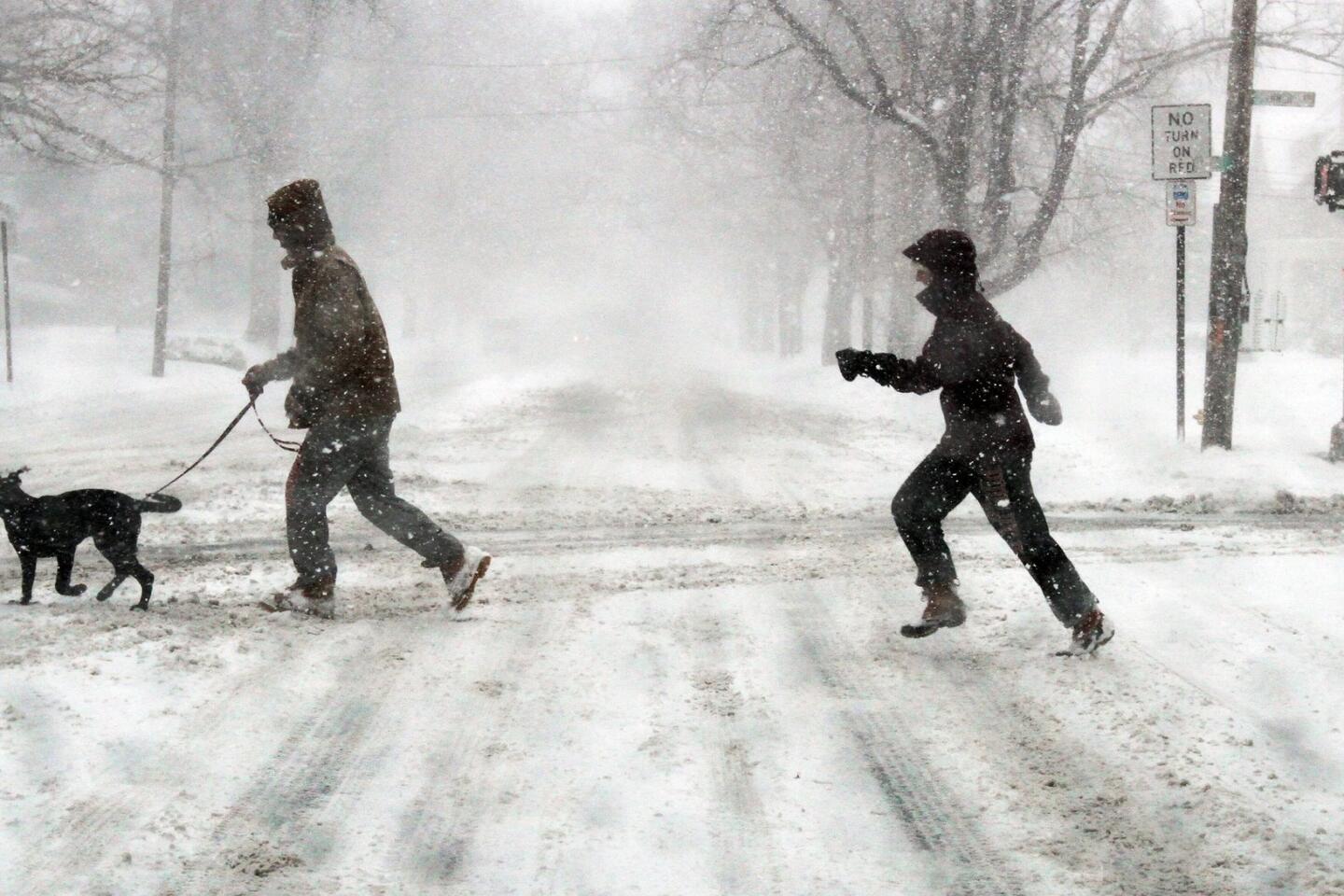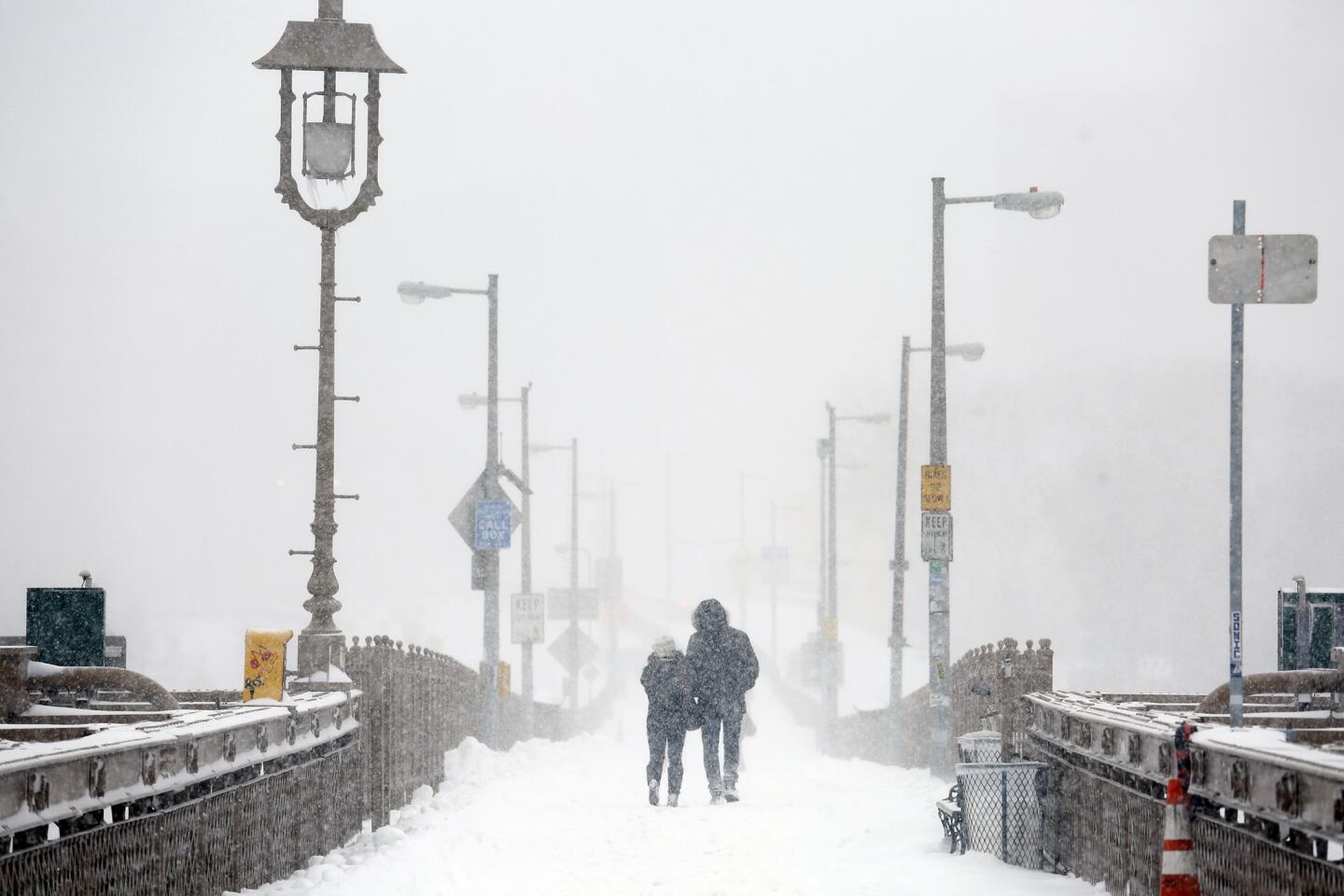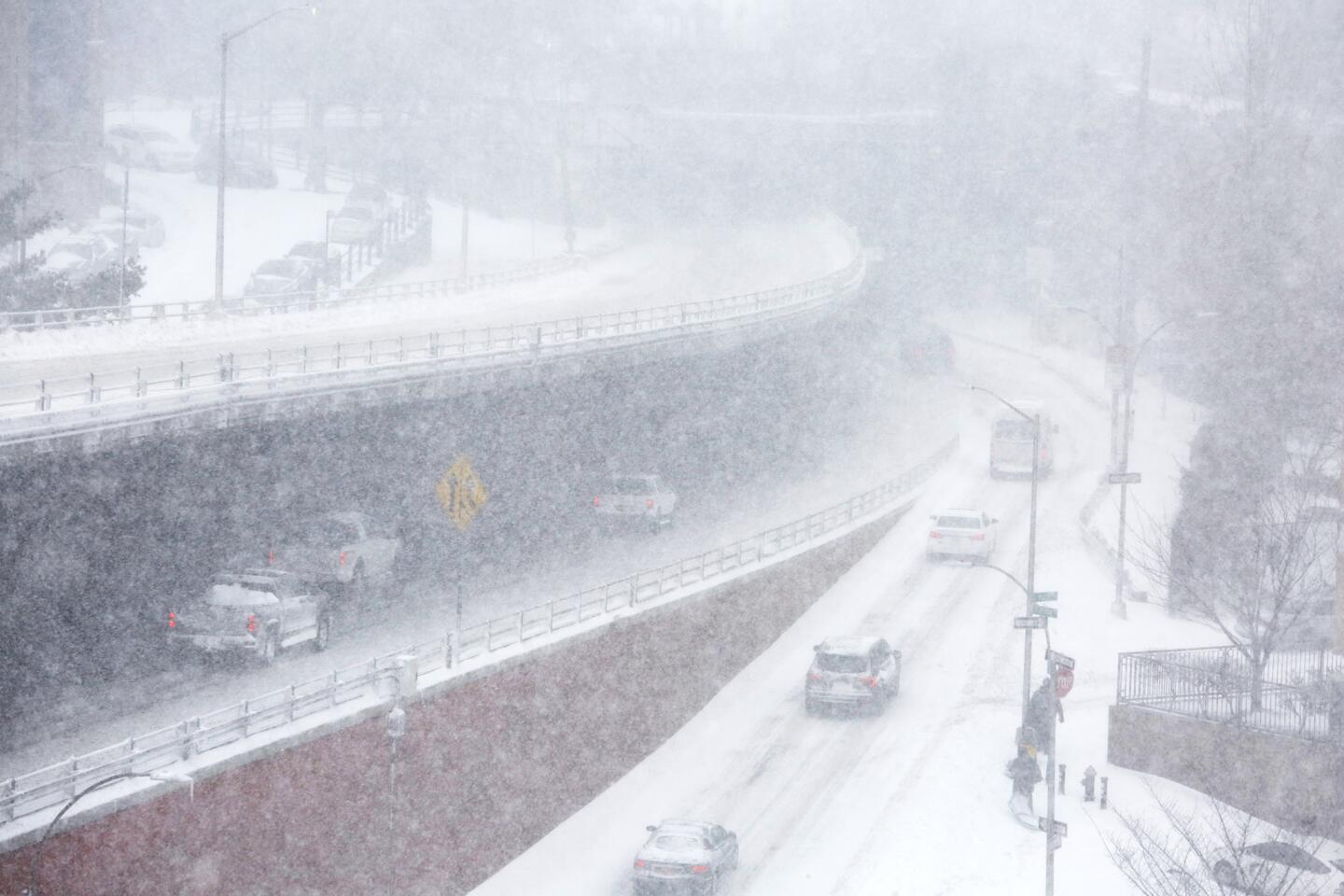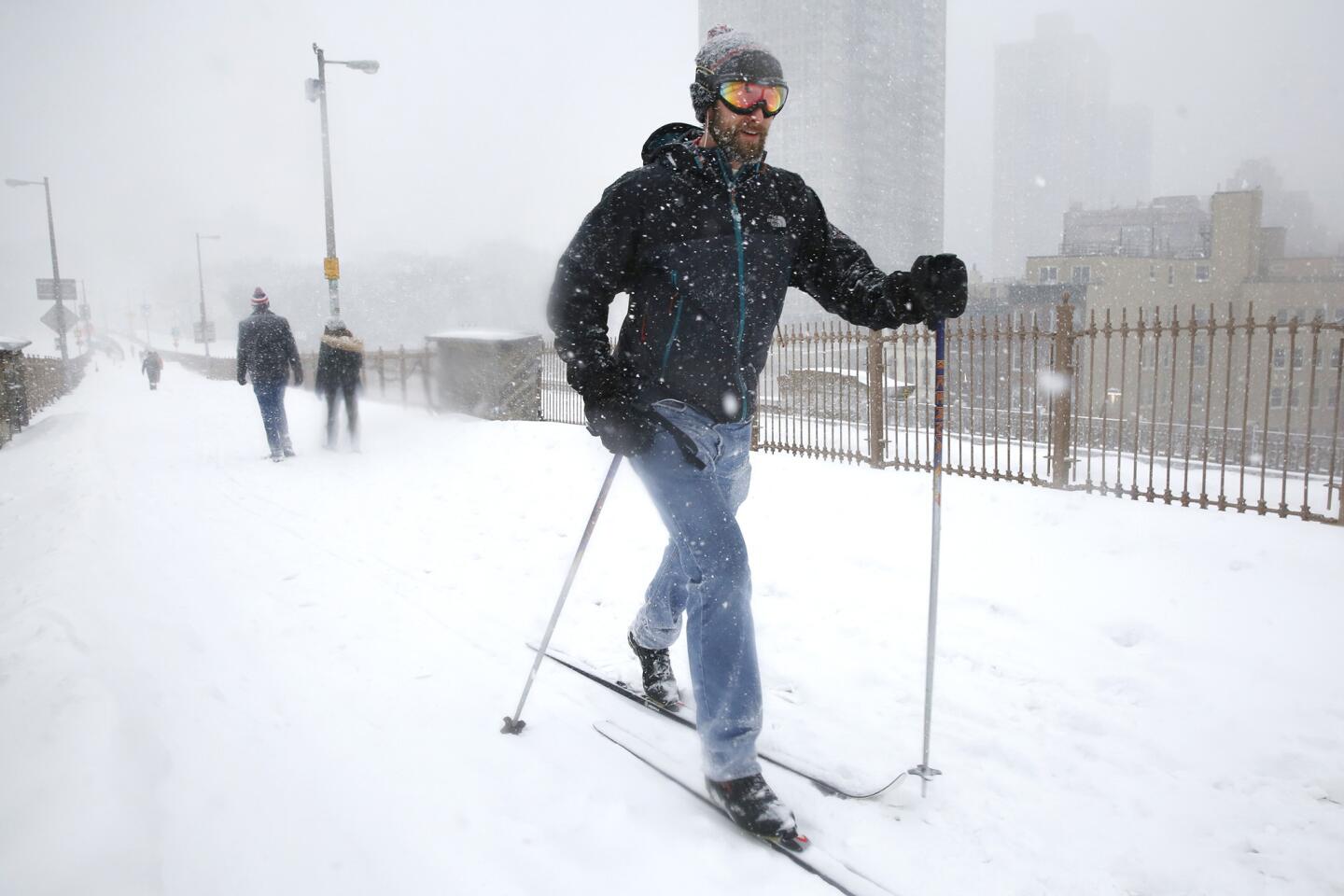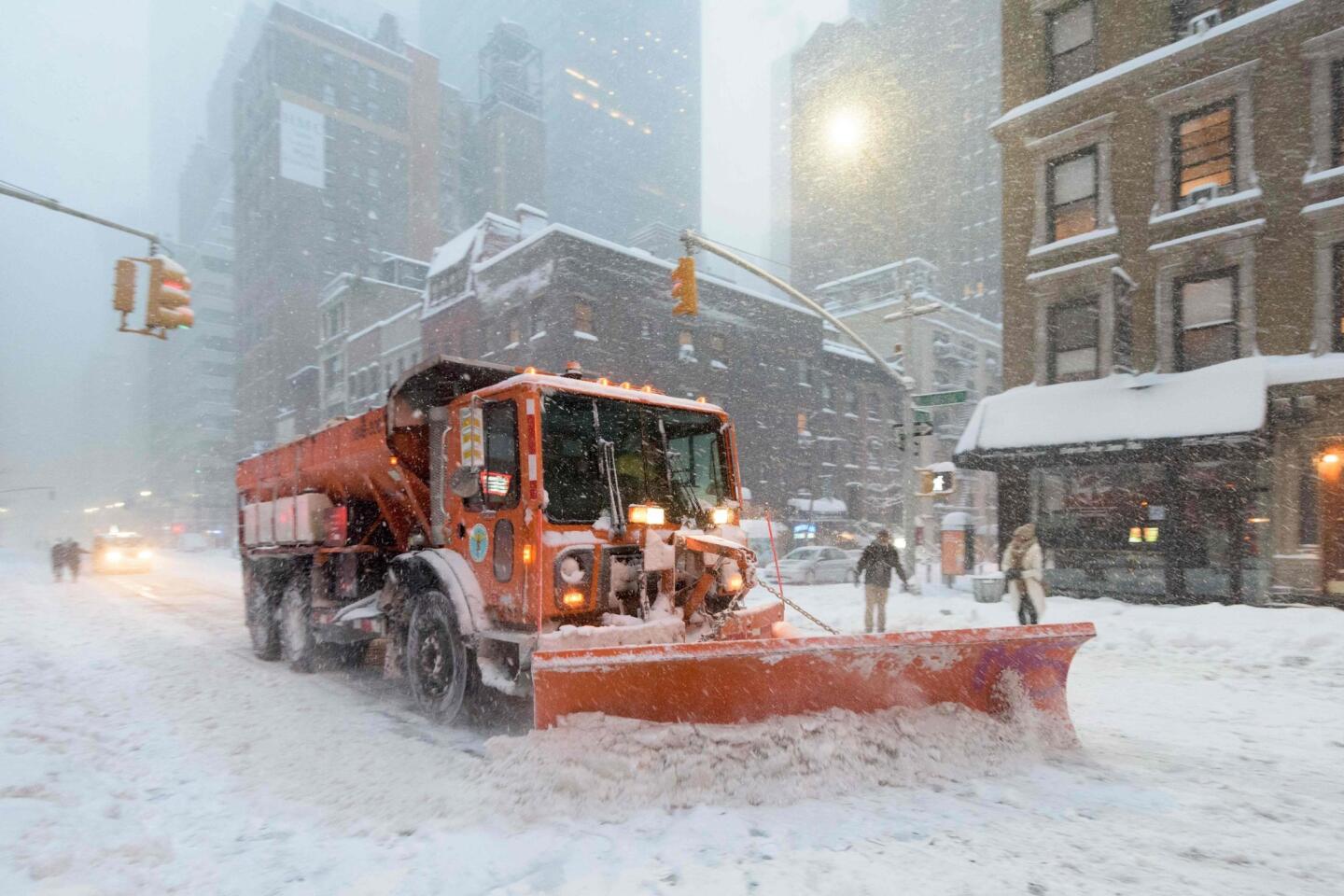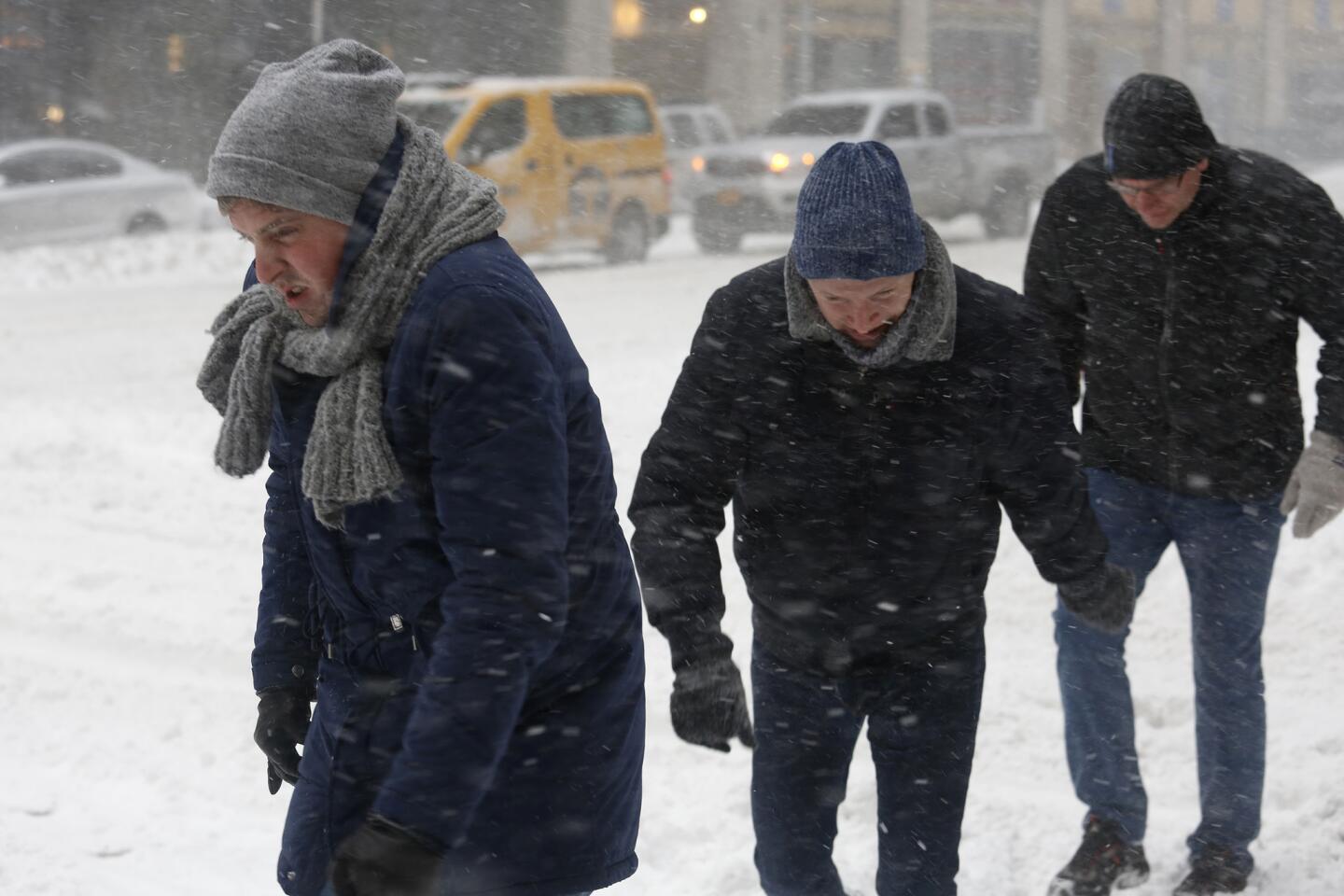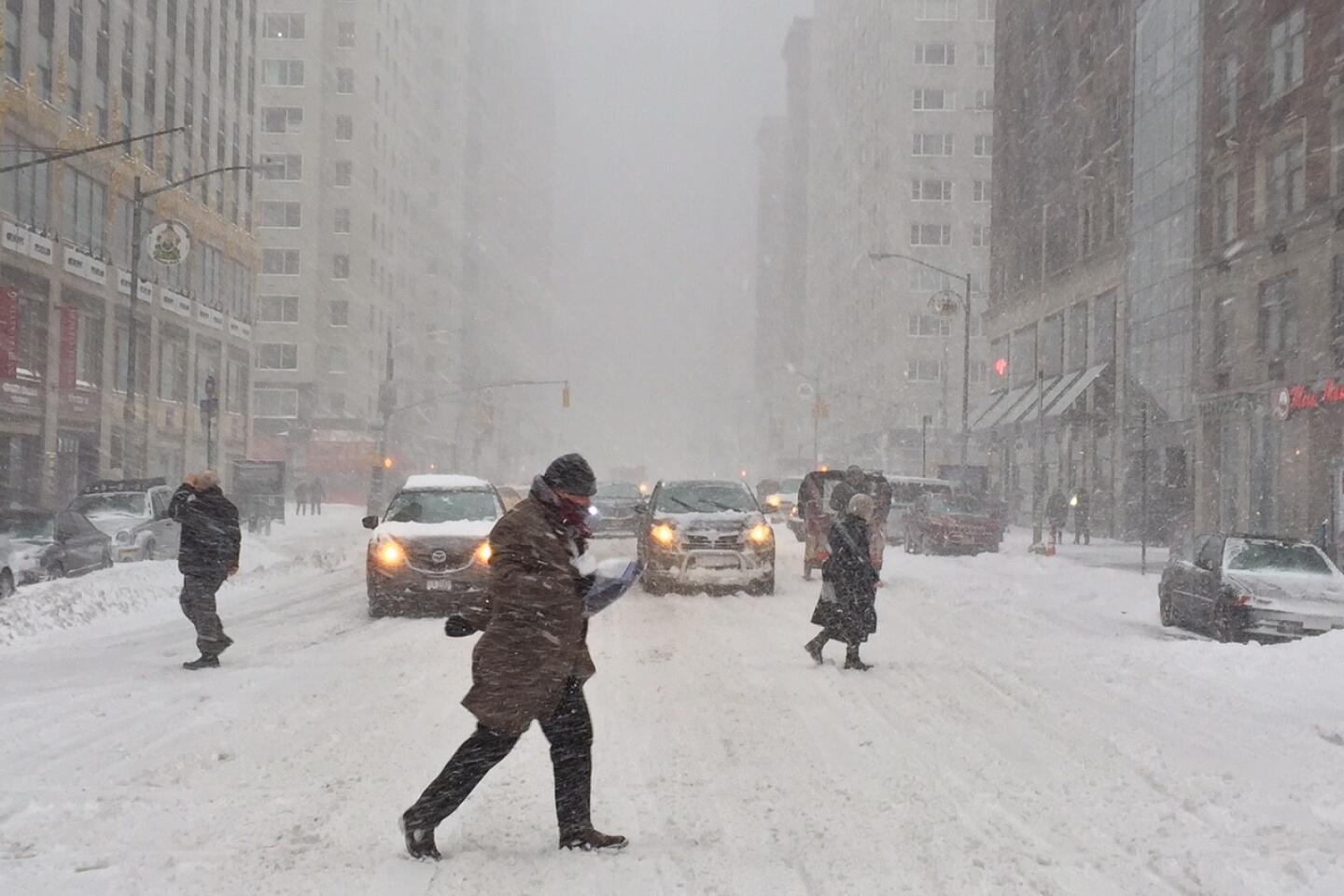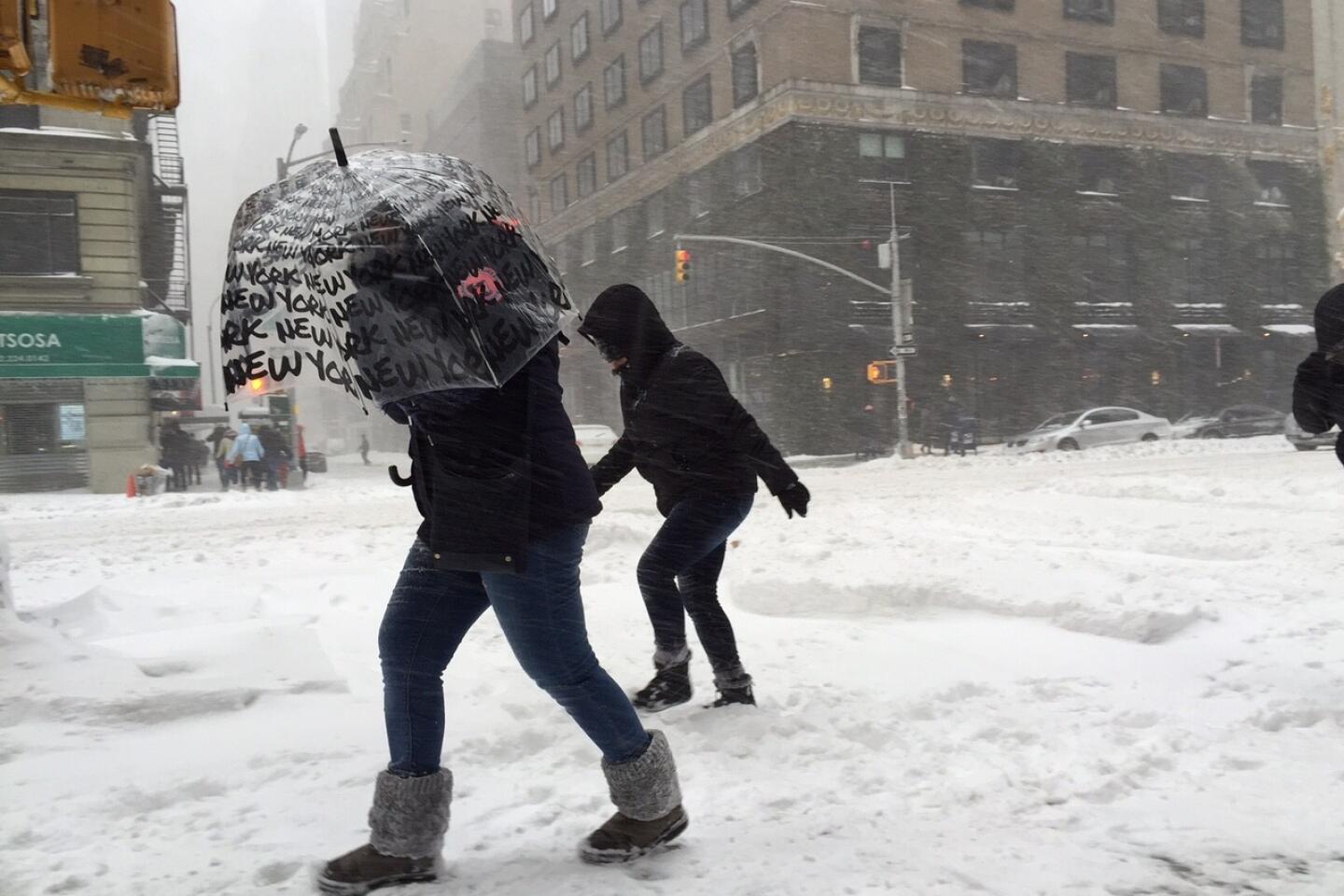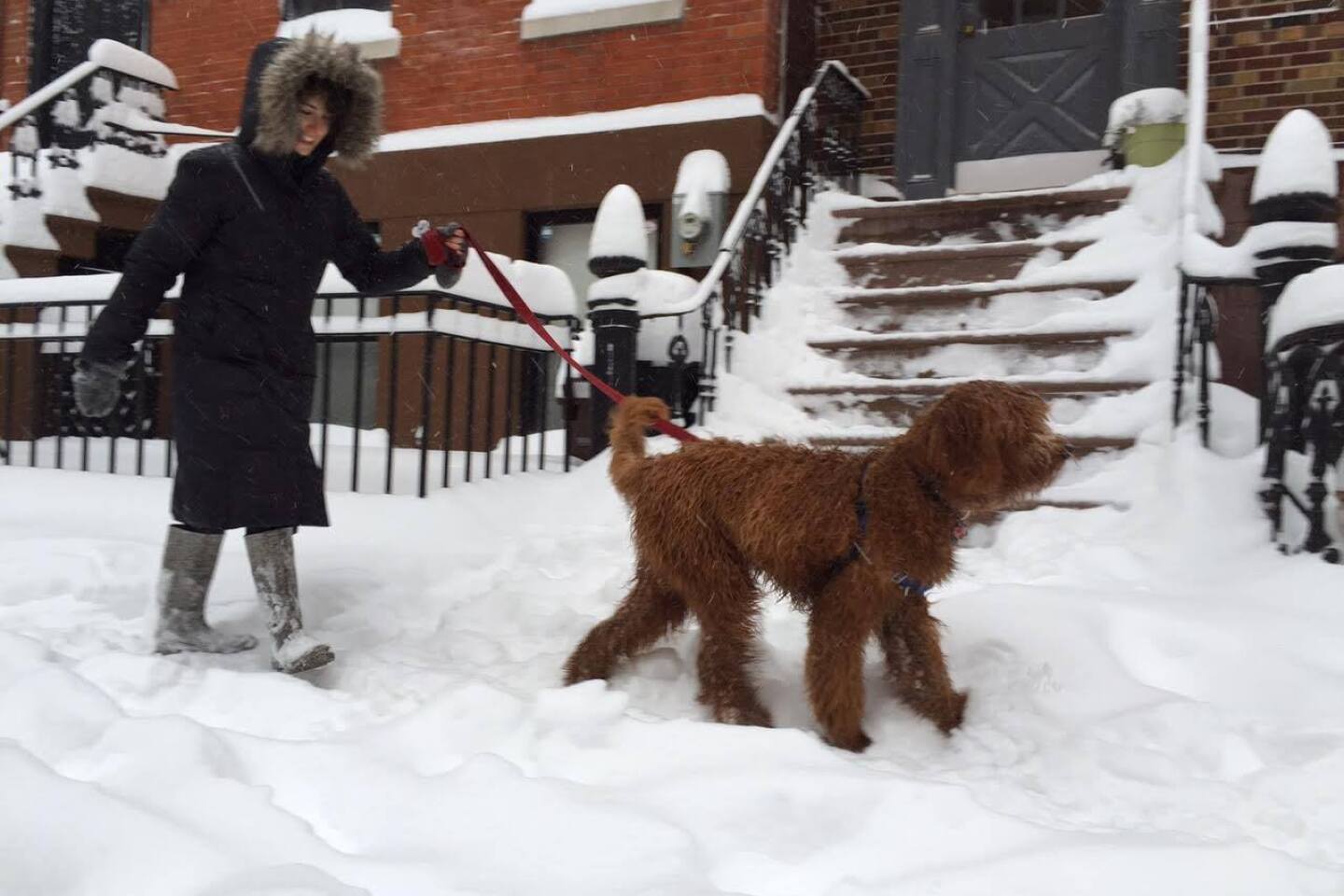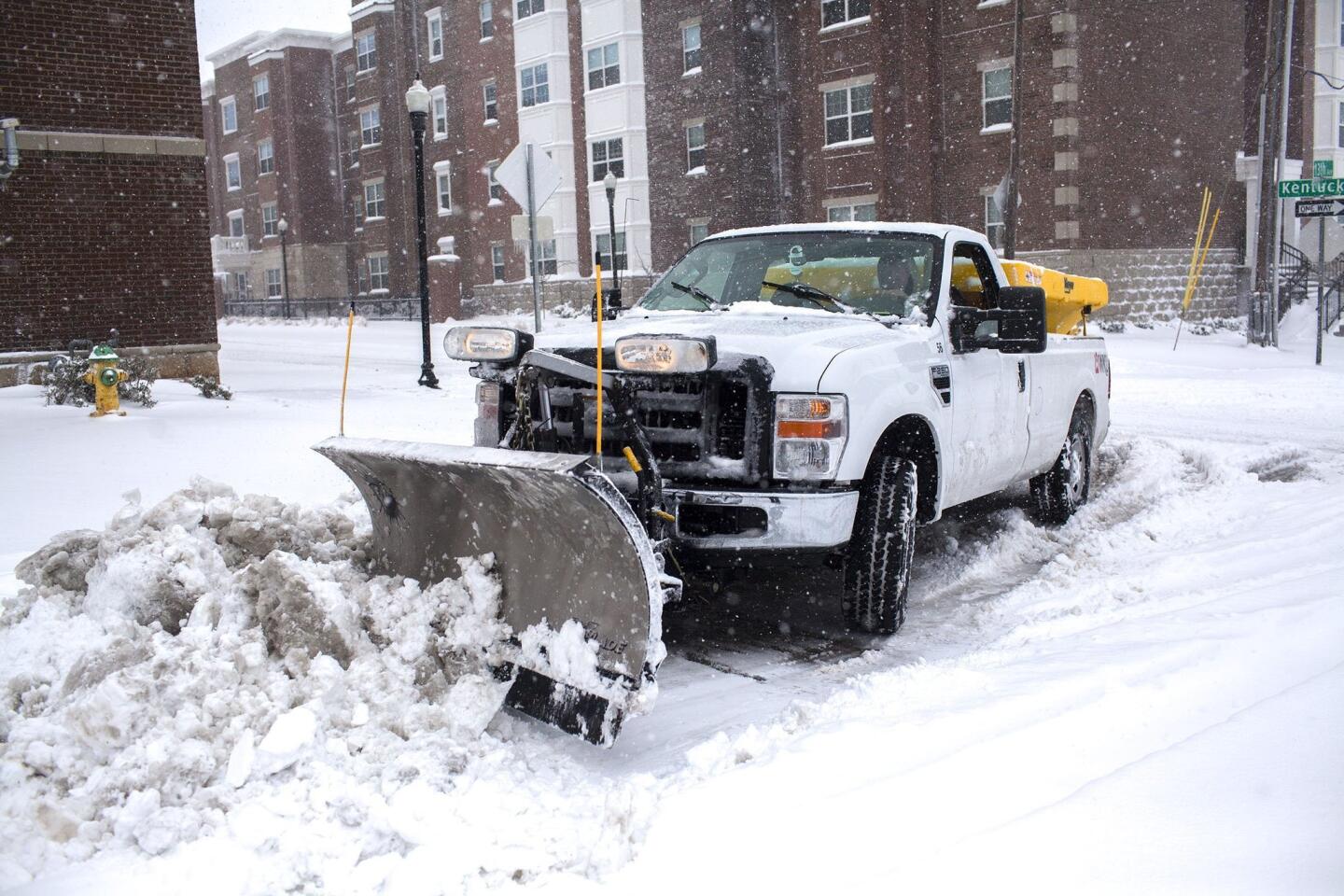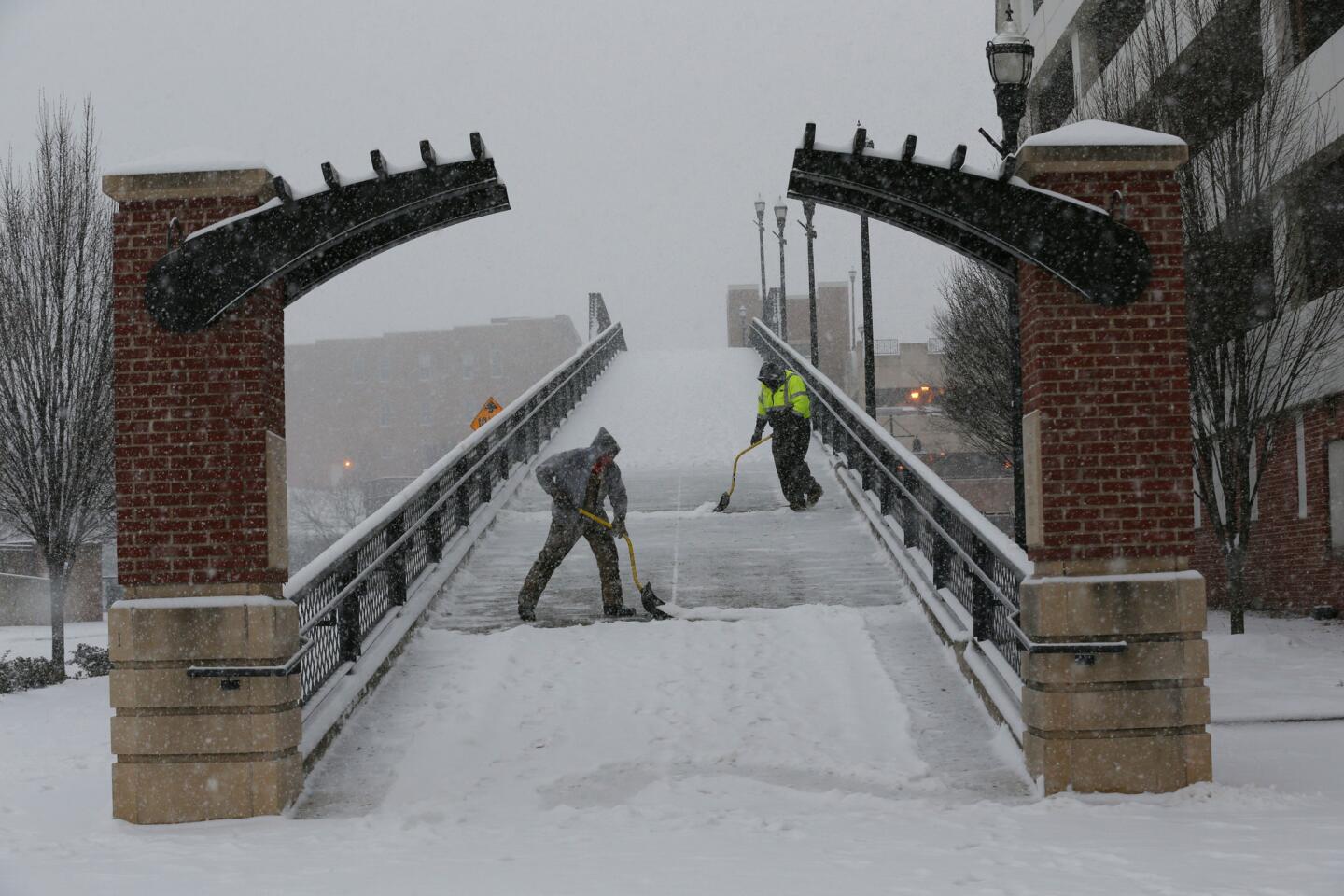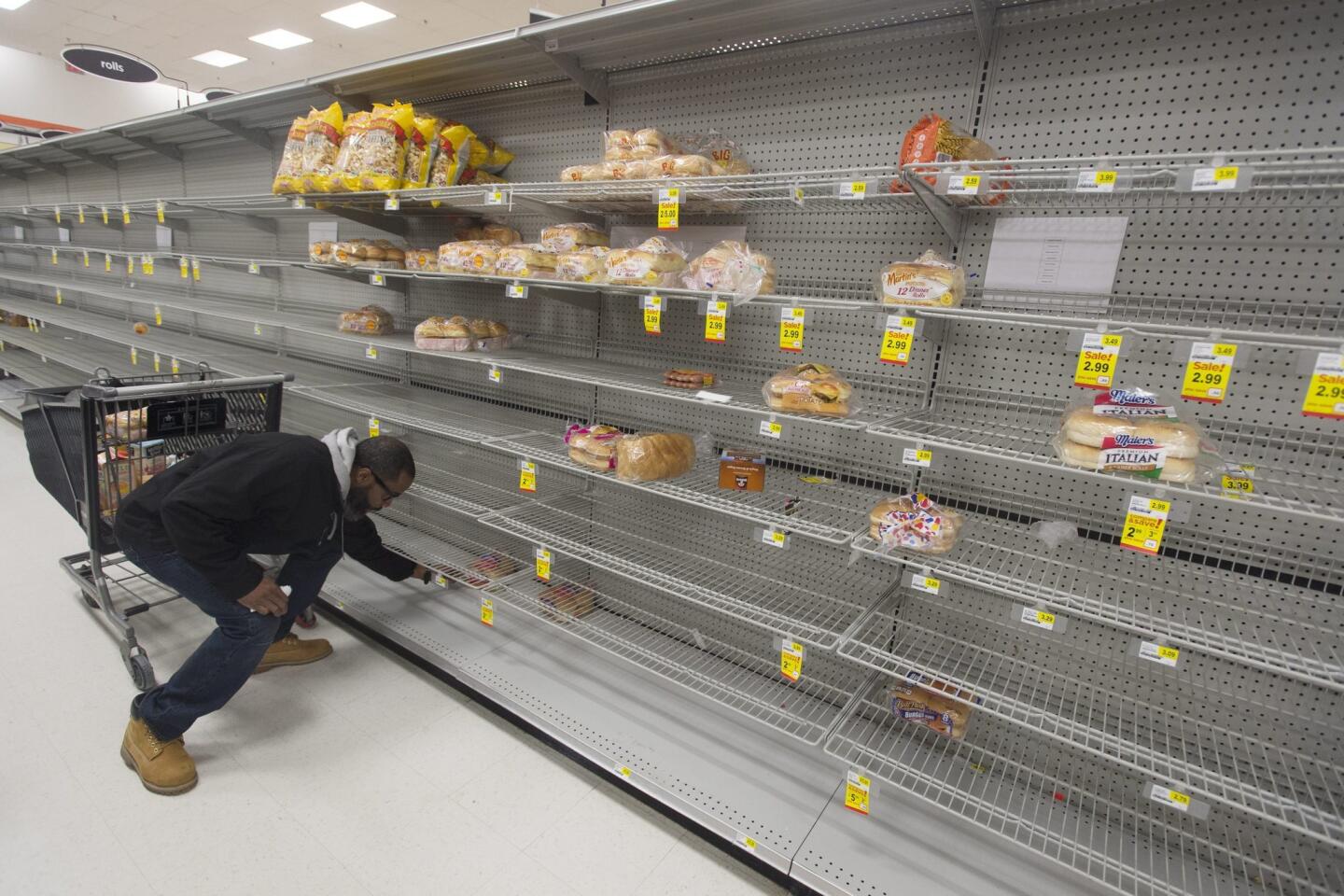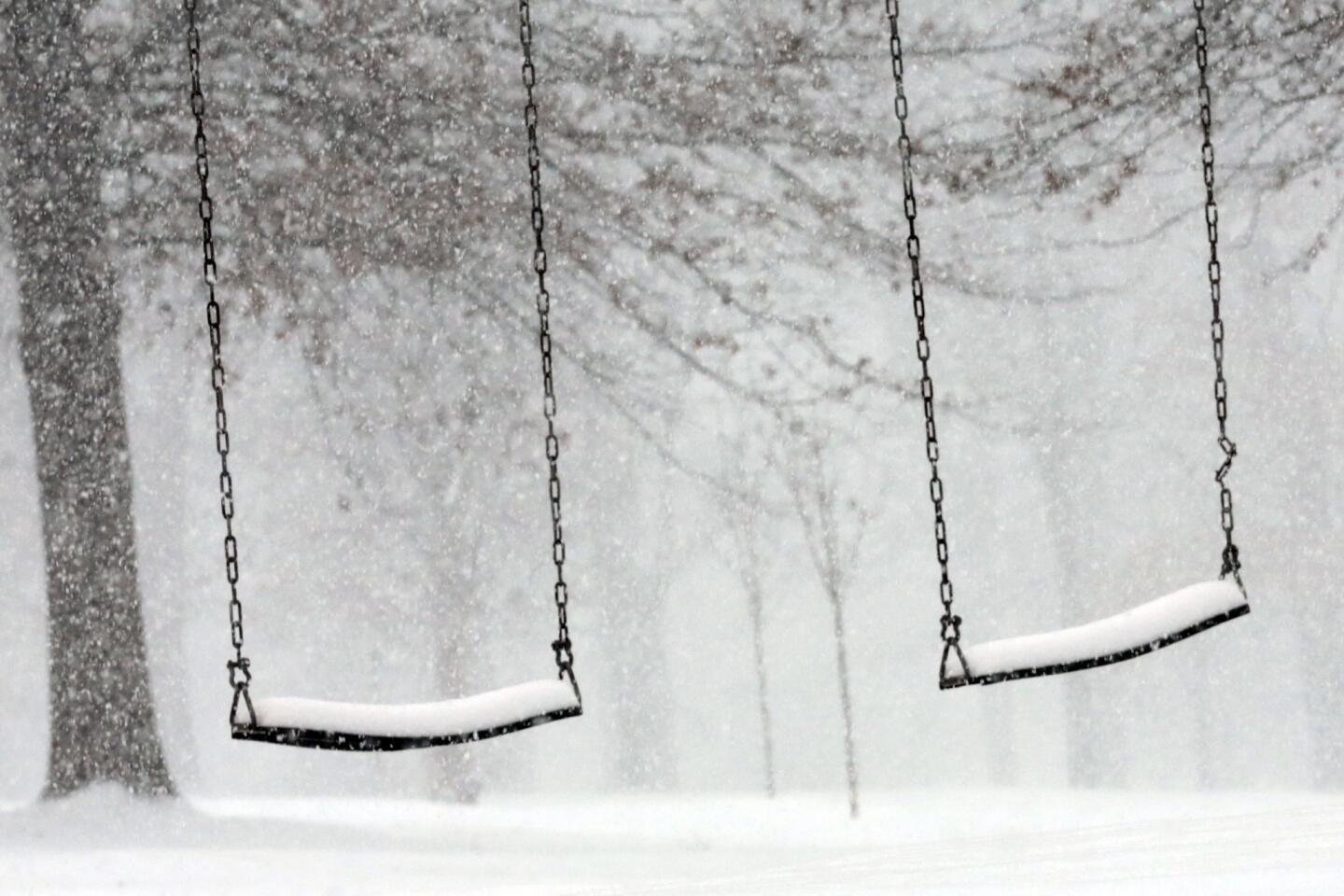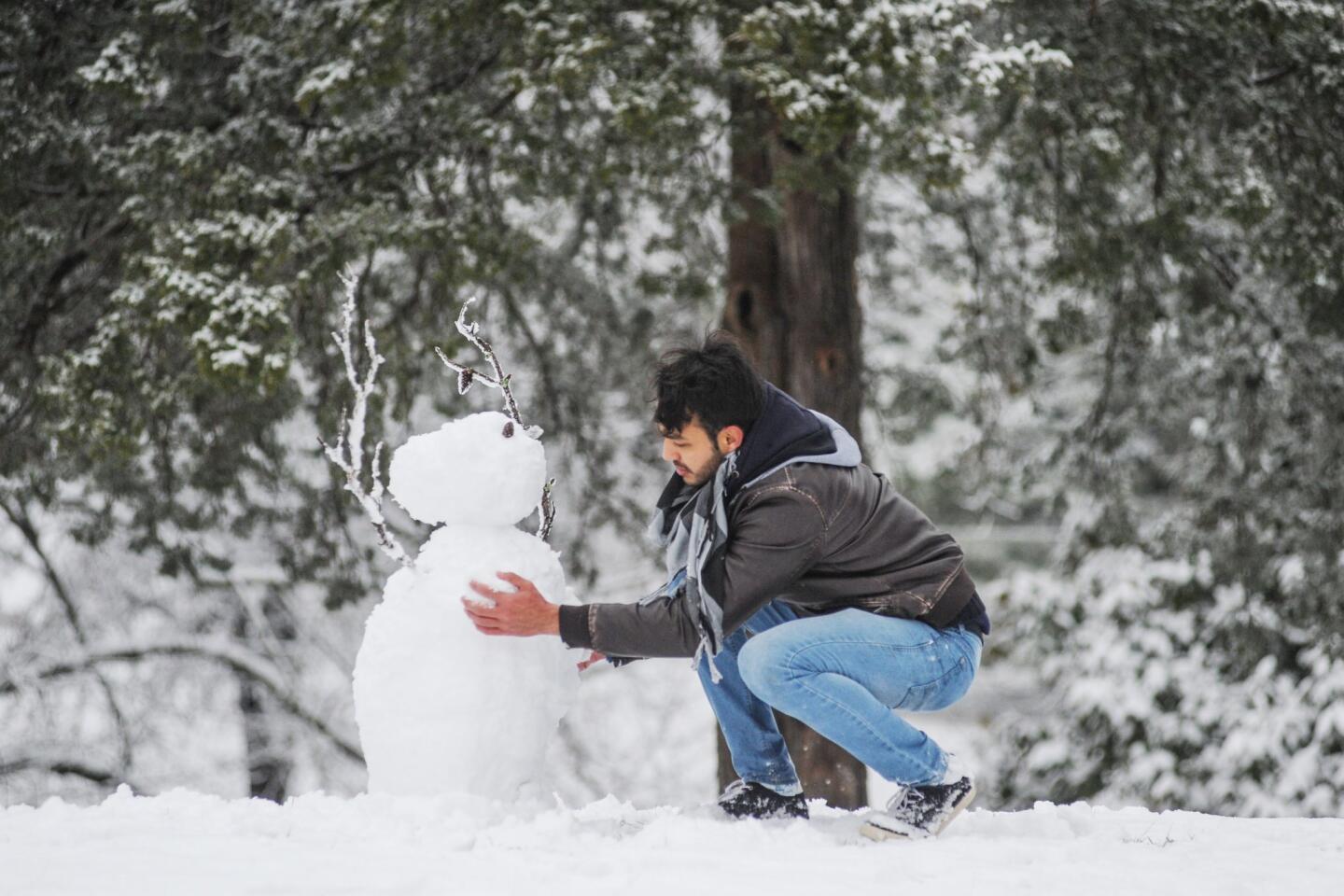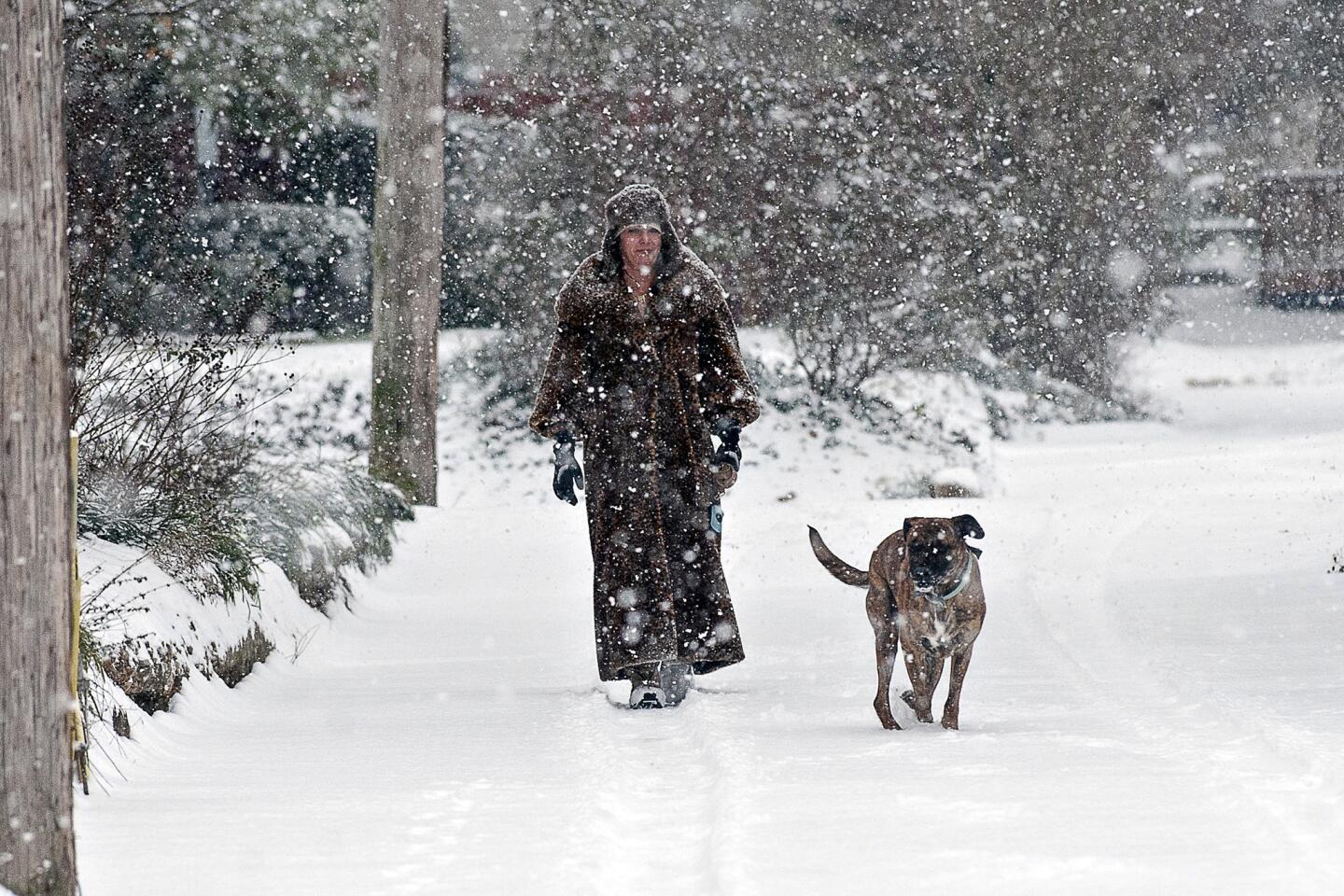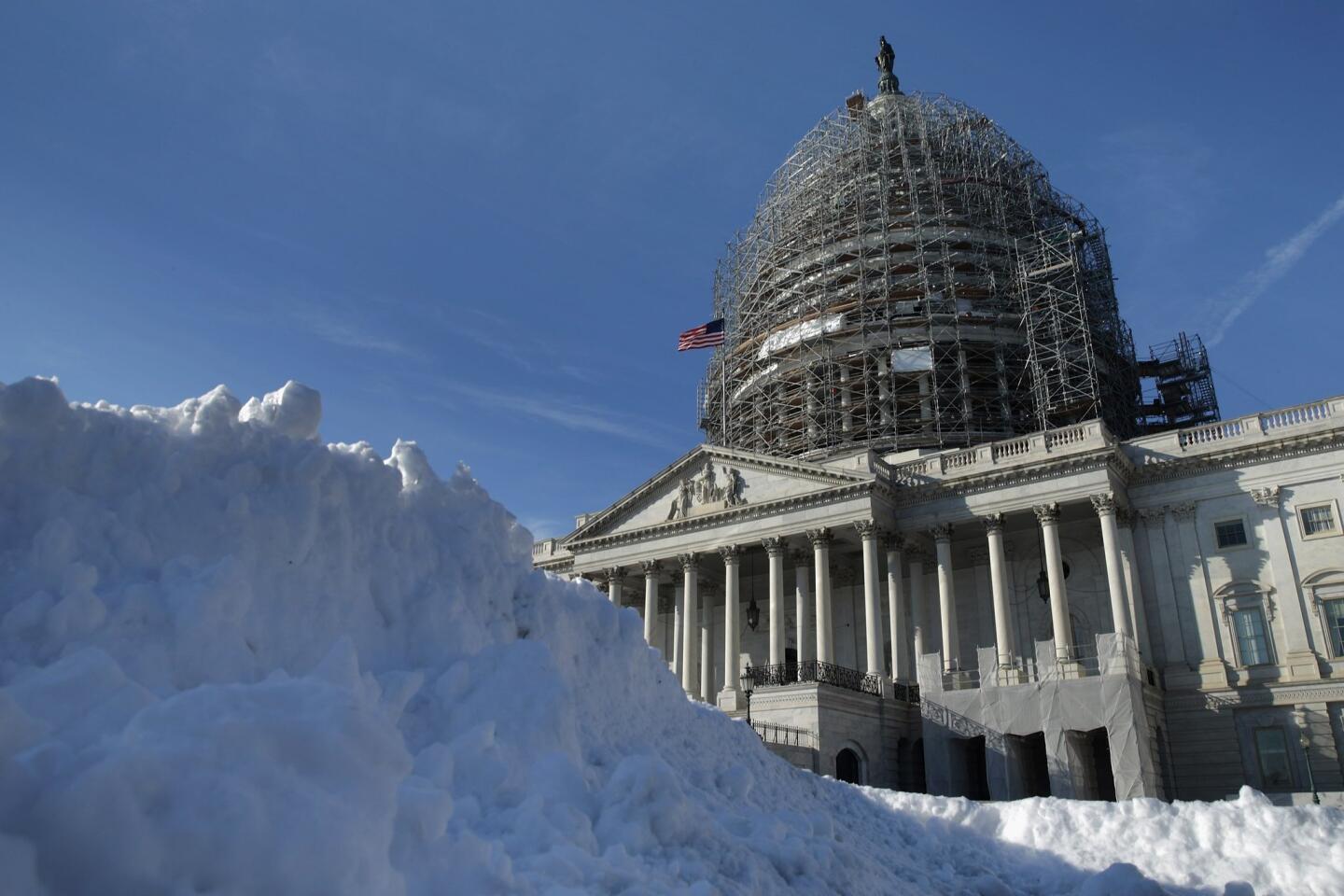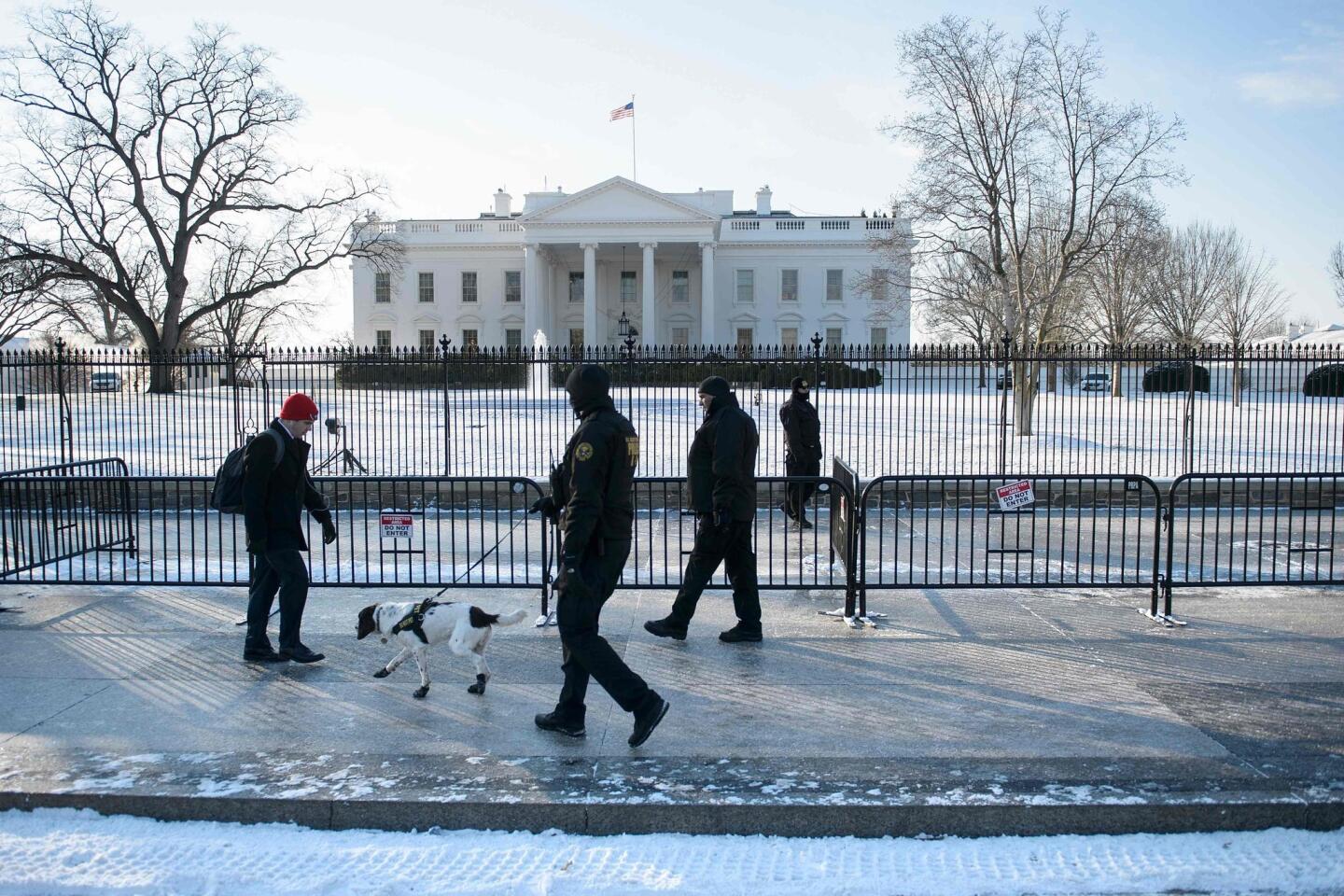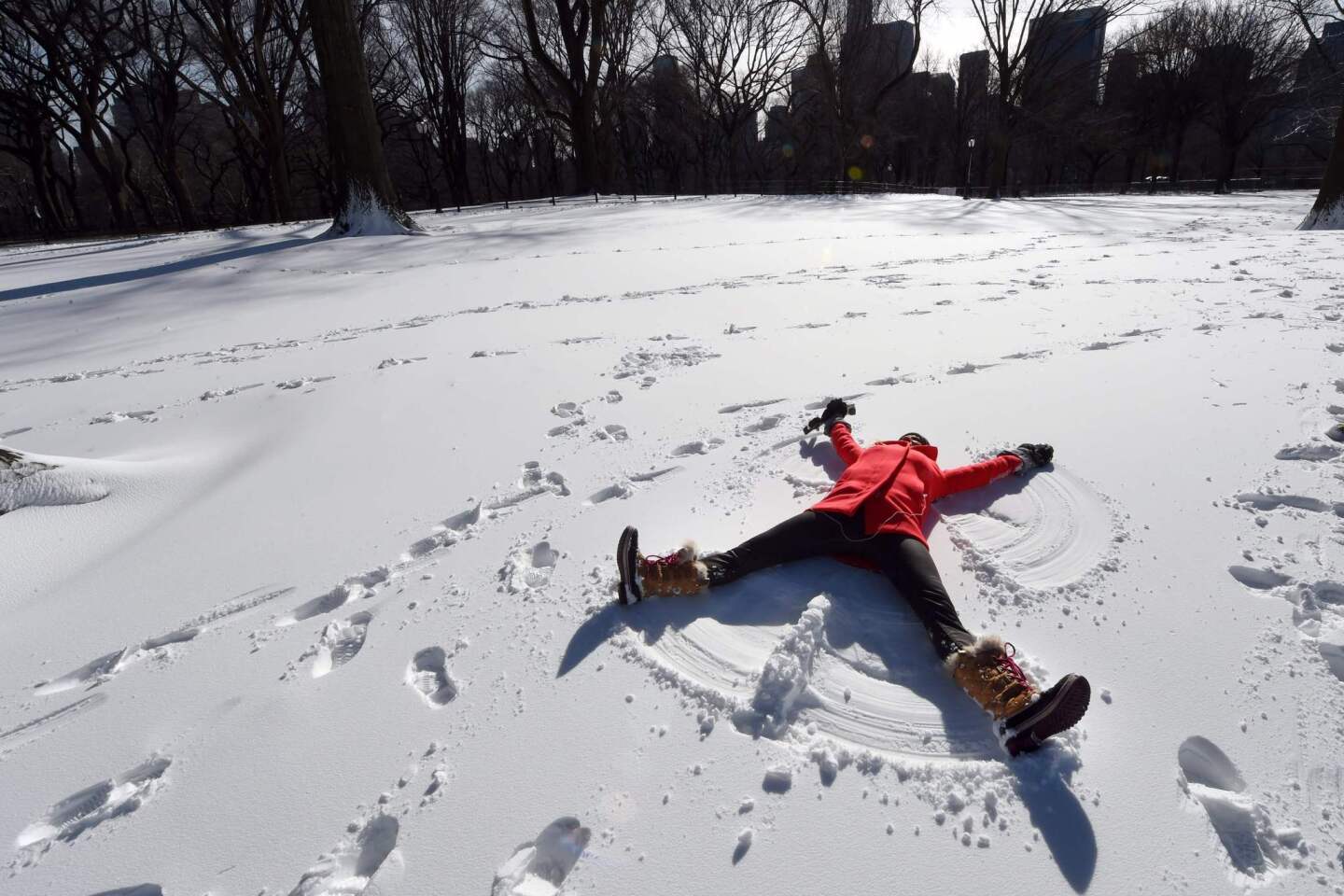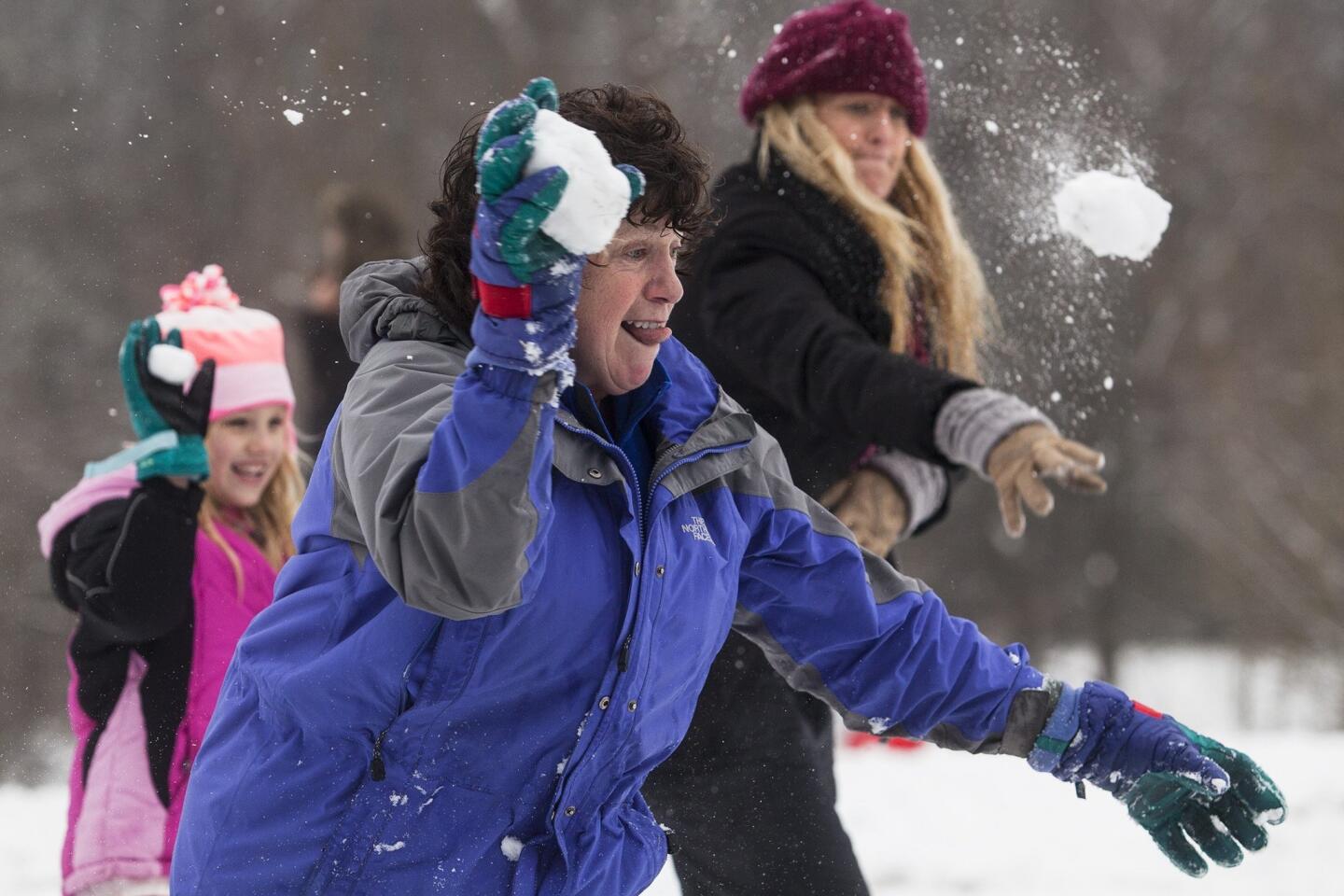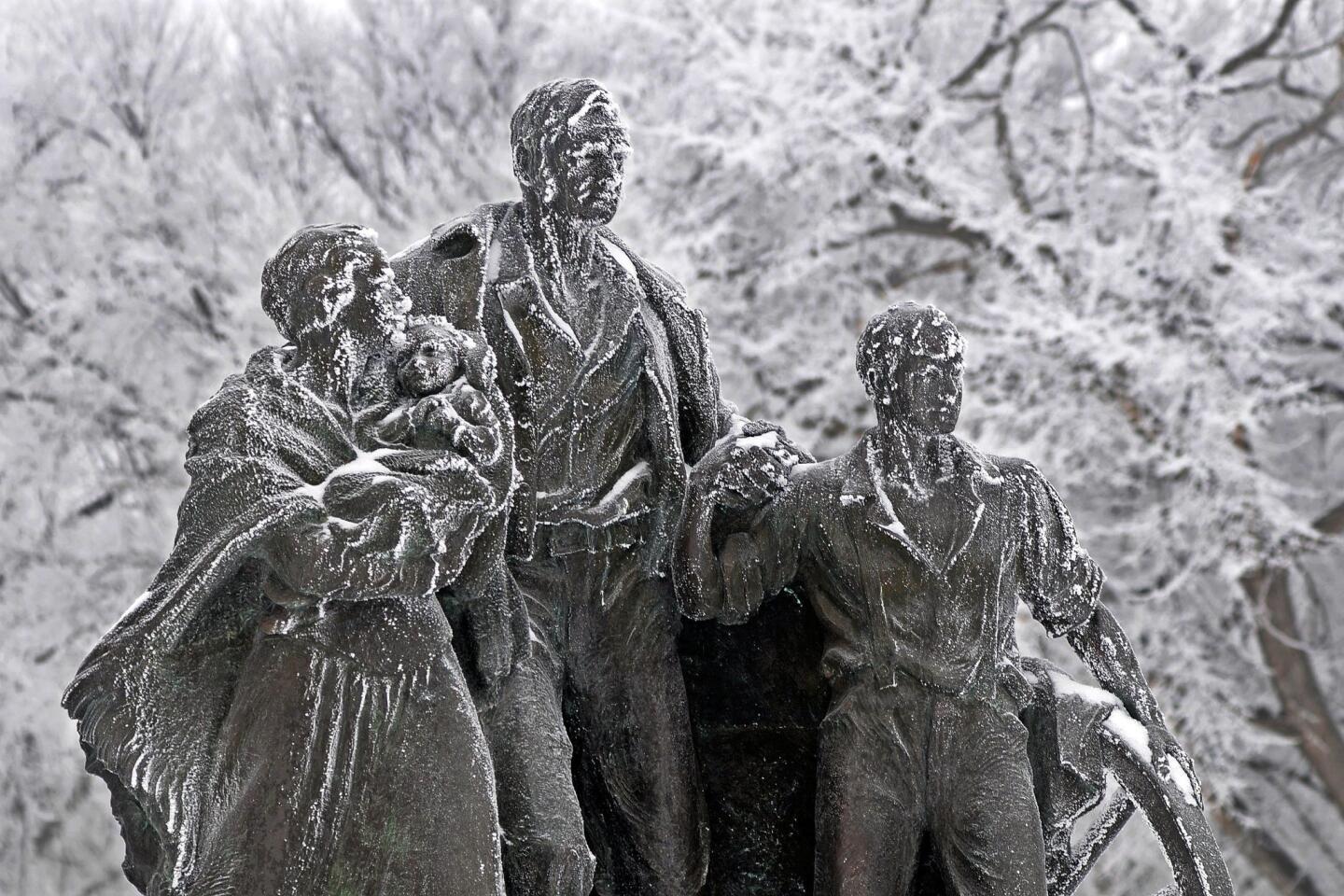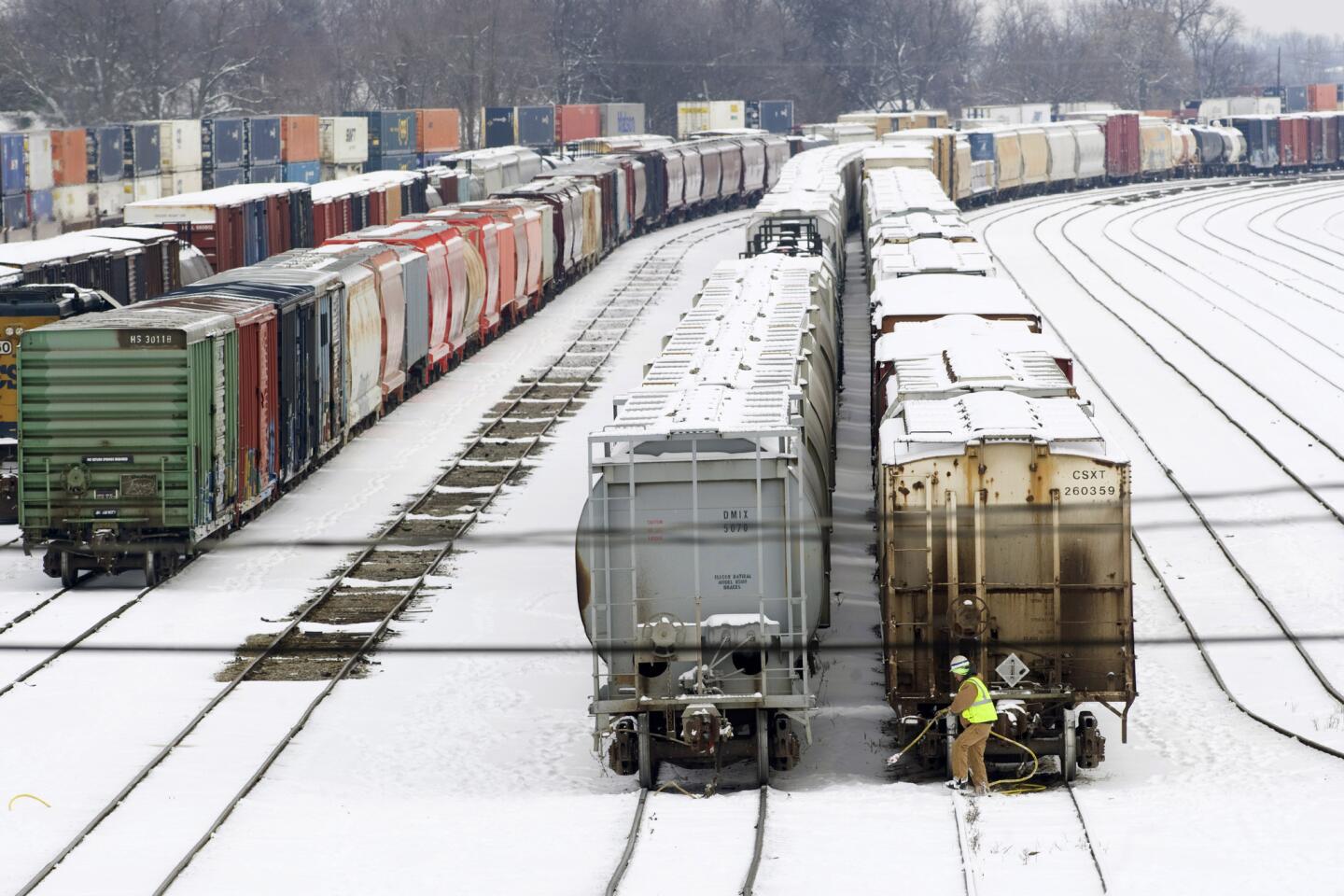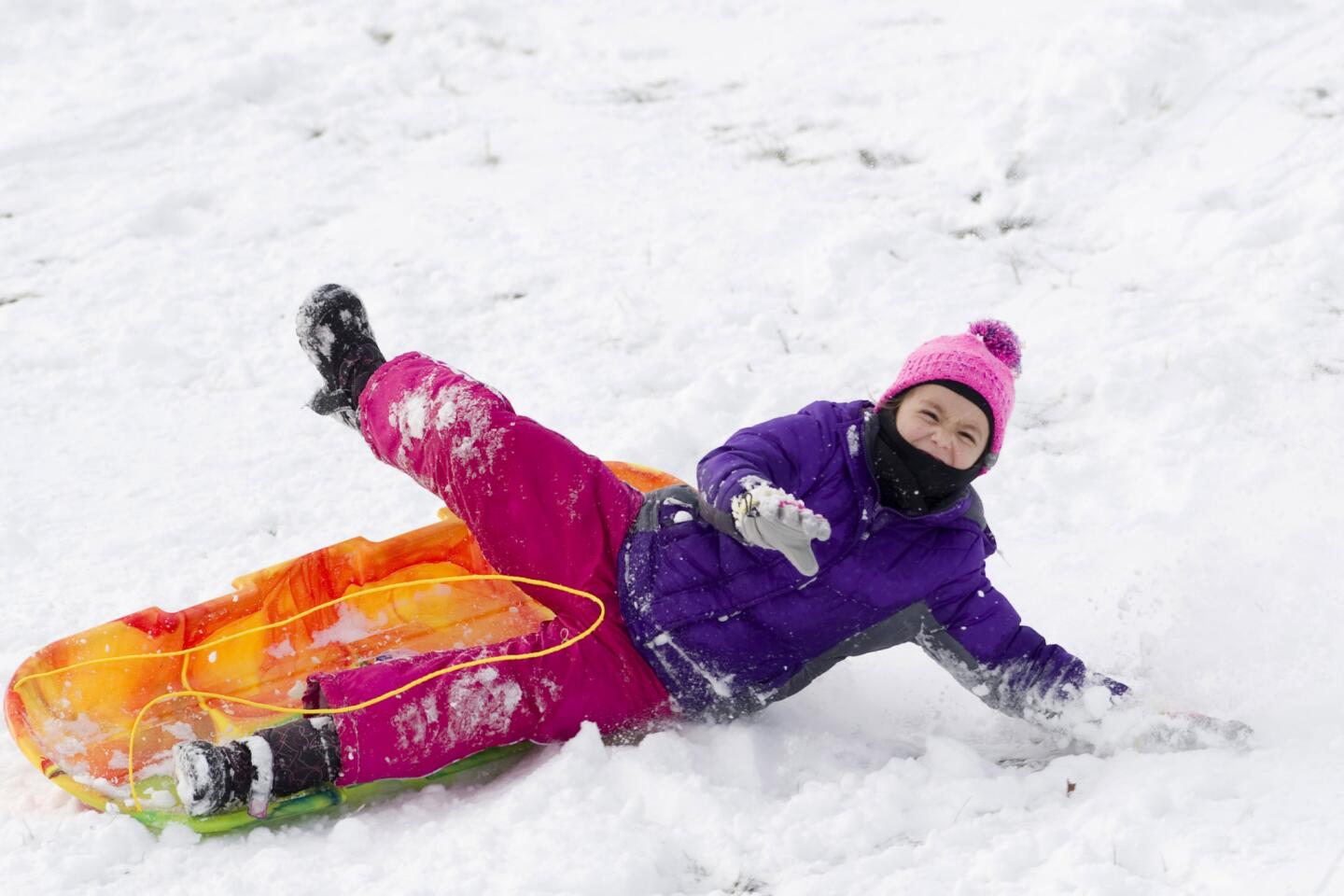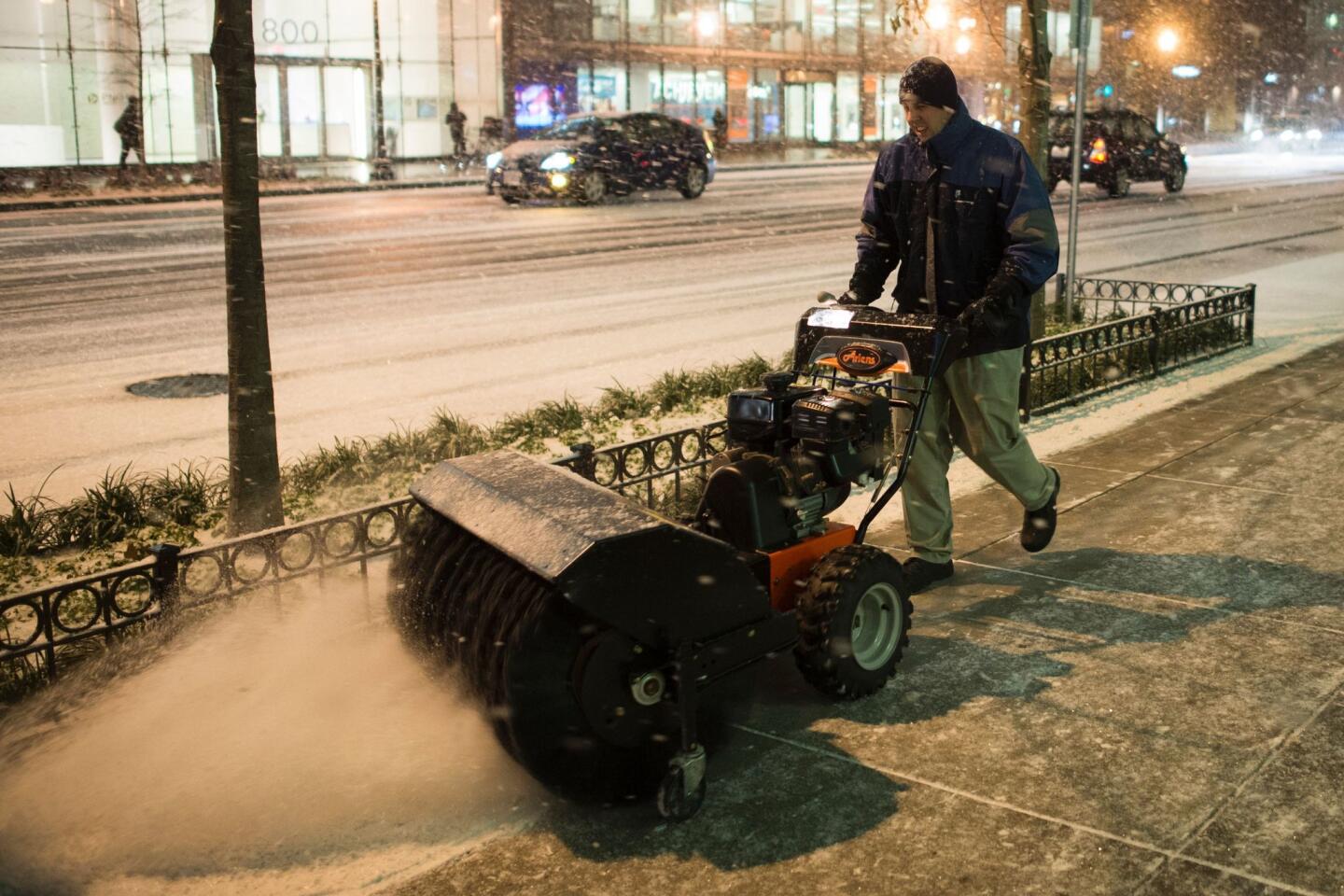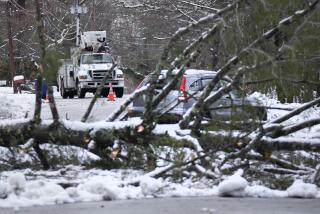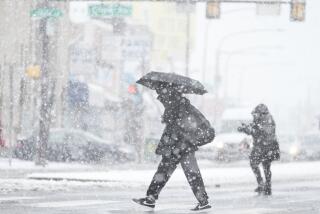East Coast begins digging out from mountains of snow left by blizzard
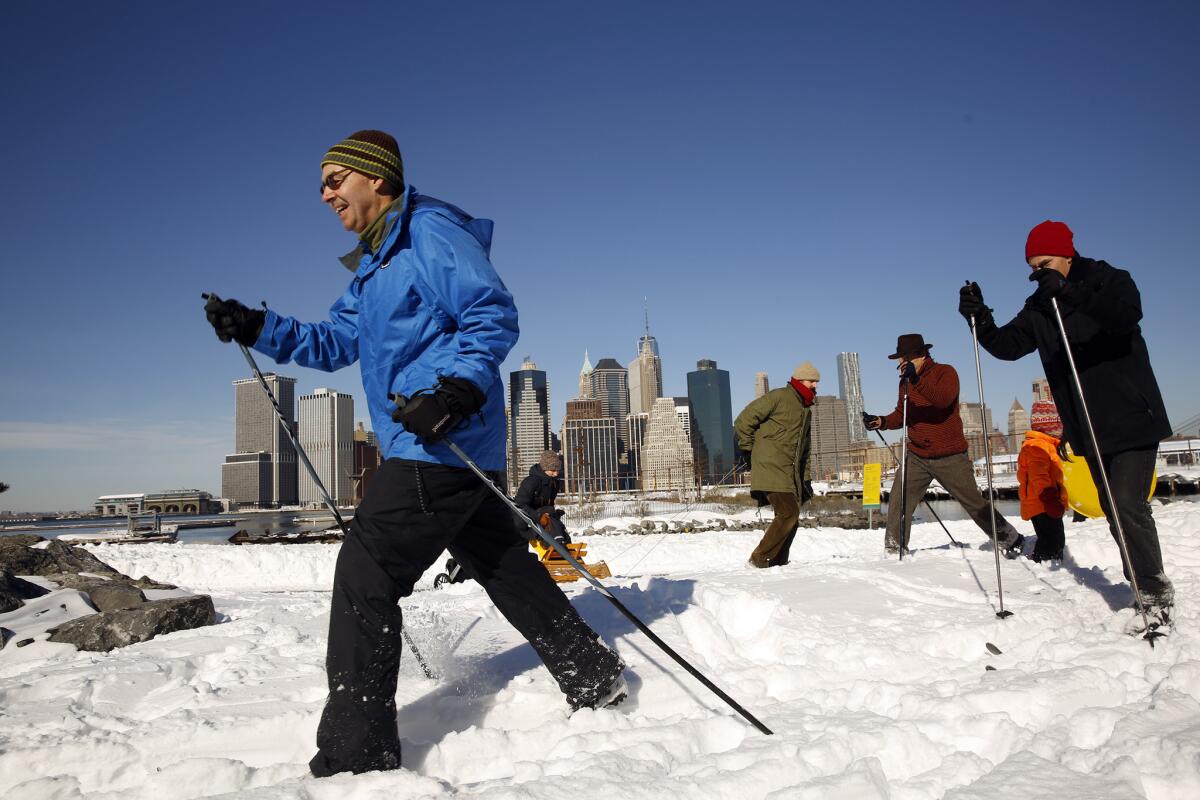
People enjoy cross-country skiing along the waterfront in Brooklyn, N.Y.
One of the fiercest blizzards to strike the eastern United States in decades moved offshore Sunday, leaving a trail of record snowfalls in major cities, heavy flooding up and down the coast, and at least 27 people dead.
As sunshine replaced the whiteout conditions of the day before, people in New York, Washington and other cities ventured out in wonder to view a landscape transformed. Residents spent hours digging out cars encased in igloos of snow that grew denser as the day wore on. Some resorted to using cones, chairs and even tables to reserve their chiseled-out parking spaces.
Others pulled out their sleds and cross-country skis and took to the still-quiet streets and to parks that were covered in knee-high drifts.
Mayors and governors spent the day trying to figure out how to remove heavy blankets of snow so that they can let businesses reopen, send children back to school and prevent more loss of life and property.
“With this much snow on the ground, it’s going to be there in some form or another for two or three weeks, if not more,” said meteorologist Patrick Burke at the National Weather Service’s Weather Prediction Center in College Park, Md.
By Sunday afternoon, the storm had moved east of Cape Cod, Mass., and into the Atlantic.
In New York City, where the 26.8 inches of snow in Central Park was one-tenth of an inch short of a record, Gov. Andrew Cuomo lifted a rare regionwide travel ban, allowing traffic to flow once again through streets, highways and tunnels.
New York’s airports also slowly returned to life, though hundreds of flights remained canceled there, among thousands grounded throughout the country this weekend.
Storm-weary New Yorkers packed subway stations, eager to once again move freely through the city. Even with major streets mostly passable, cars were a rarity as many remained sandwiched between heavy layers of fresh snow and wouldn’t budge until a thaw.
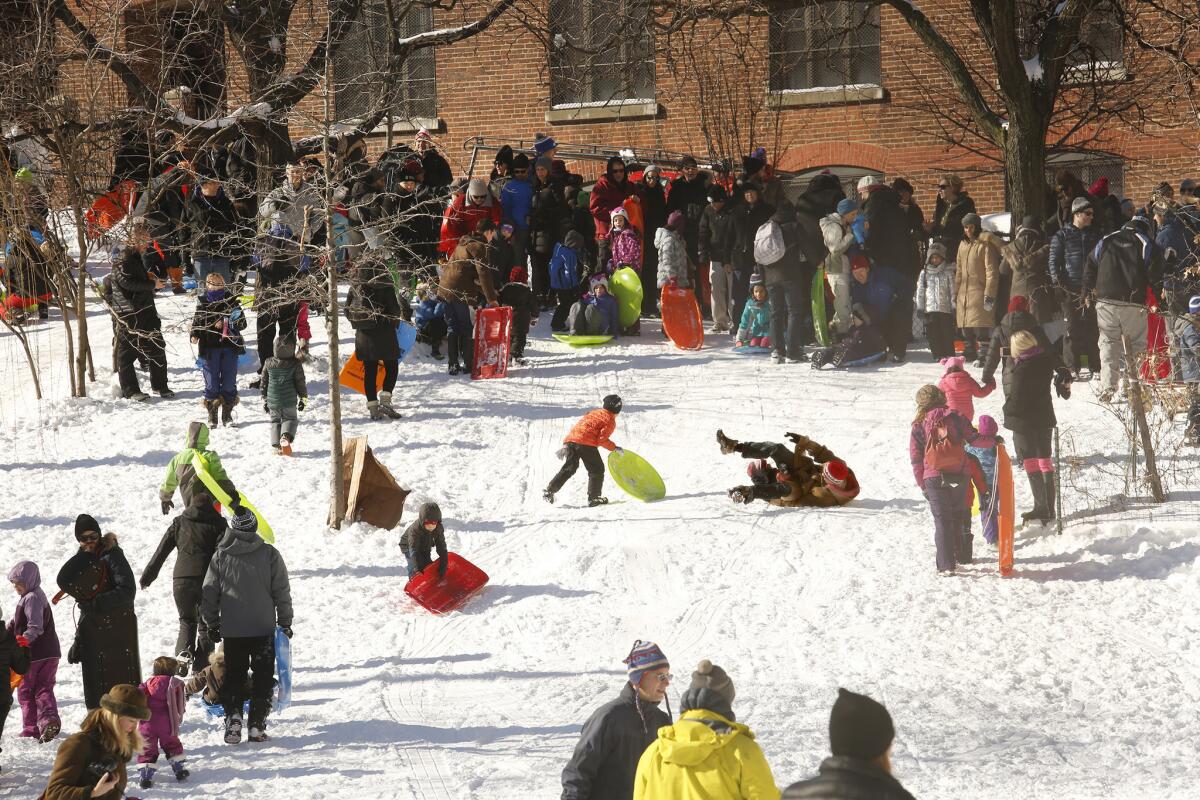
Families enjoy sledding at Hillside Dog Park in Brooklyn, N.Y.
Streets remained clogged in the city’s largest borough, Queens. Mayor Bill de Blasio promised to focus snow removal efforts on the borough, and the city announced it would hire temporary snow shovelers.
“This was one of the worst storms to ever hit New York City, and we need all hands on deck to dig us out,” De Blasio said.
Fire hydrants and bus stops were a priority. Firefighters responding to a midtown Manhattan blaze earlier in the day had to clear snow around hydrants, costing what the department said were seconds of valuable response time.
For many New Yorkers, the day was an opportunity to take advantage of the storm for fun or profit.
“I would have been out earlier, but I was hung over,” said Jim Keller as he skied through Brooklyn Bridge Park, along the East River, with a group of buddies calling itself the Brooklyn Ski Patrol.
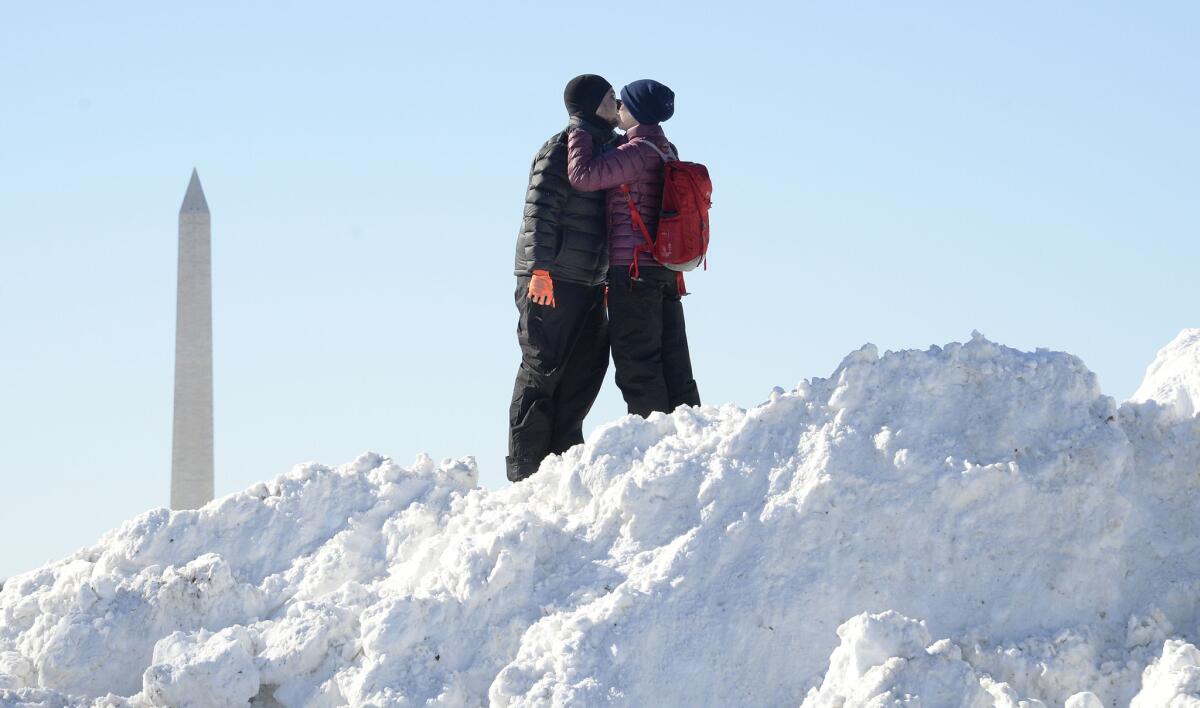
A show of affection on a pile of snow in Washington.
In Brooklyn’s Red Hook neighborhood, teenagers Tyrone Graham and John Ruiz tried to earn money shoveling out cars. Graham was sweating, having already dug out three. “We’ve almost made $100,” Ruiz said.
Professional sporting events and many other activities throughout the East Coast were canceled. Many businesses and museums remained closed.
“We’ve made a lot of progress,” Cuomo said at a news conference. “We’re not out of the woods yet; we’re not done.”
The storm smashed snowfall records in Baltimore (29.2 inches at the airport) and Allentown, Pa. (31.9 inches). Washington Dulles International Airport recorded its second-highest total (29.3 inches), and Philadelphia came in with its sixth-highest (22.4 inches).
In the hardest-hit parts of Delaware, which saw icy floods throughout Saturday’s storm, emergency officials reported that conditions were calmer, but that evening tides would leave some roads still flooded.
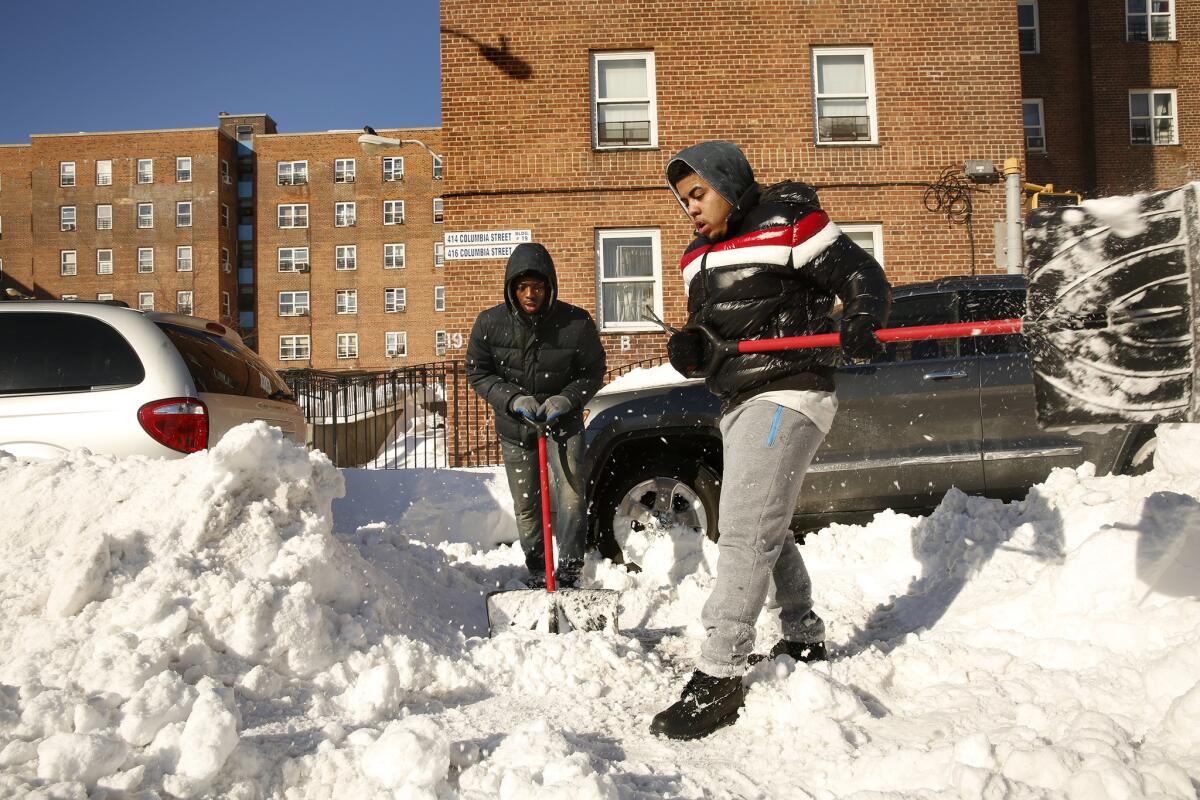
John Ruiz, 18, right, and Tyrone Graham, 16, earn money digging cars out of the snow in the Red Hook neighborhood of Brooklyn, N.Y.
Flooding was possible through midnight, according to the National Weather Service, but posed “no significant threat” to communities nearby, unlike the much heavier water seen Saturday.
“The people in those communities are very resilient and they’ve been down this road before,” Sussex County, Del., communications director Chip Guy said. “This is not their first nor’easter rodeo.”
Local and federal leaders, including Delaware’s governor, were surveying the damage from the air, but communities were breathing easier now that winds had switched and begun to push floodwaters back offshore.
Washington Mayor Muriel Bowser officially canceled school for Monday. Buses and subways in the nation’s capital, which were brought to a standstill over the weekend, will maintain a limited schedule Monday. And to clear streets, the city borrowed 400 plows, snow removal machines and dump trucks, tripling the size of its snow-clearing fleet, Bowser said at a news conference.
“The crews need access to the streets,” she said, warning of $250 fines for cars parked on emergency routes. Drivers who venture out and get stuck will be socked with even higher costs: a $250 fine plus towing and impounding fees.
In northwest Washington, residents spent the morning shoveling out cars, building makeshift sled hills and chatting about which shows they binge-watched and what they ate during the hours they spent cooped up over the weekend. Few, other than a family whose toddler had strep throat and needed to go to a doctor, tried to make it through the narrow, icy streets in their cars.
When a large city snowplow lost traction trying to clear a hill, six neighbors spent 20 minutes helping the driver dig it out.
Brent Wible, a federal government attorney, said he spent hours trying to dig out his Subaru Outback, only to begin anew when a snowplow drove by and wedged a 1 1/2-foot wall back against it.
“It was a lot easier at 7:30 this morning,” he said in the afternoon, a full shovel in his hands, as the snow became more dense and firmly packed.
Officials warned that freezing temperatures would make it more difficult to remove snow from sidewalks and that built-up ice could lead to more sliding cars and people. Recovery could take many days.
“Two feet of snow is a lot to move,” said Chris Geldart, the city’s emergency director.
David Johnson, an attorney, took his 4-year-old son, Xavier, sledding after digging out his house and car for an hour. Churches were closed, so he and his wife held services in their home.
“It’s great,” said the Three Rivers, Mich., native. “This is actually the first Michigan-like winter I’ve had in the four years I’ve been here.”
The House of Representatives announced that it would cancel votes for the coming week and the Senate plans to return late Wednesday, allowing members to stay home.
The capital was also struggling to recruit more volunteers to help elderly and disabled residents shovel their sidewalks, many of which remained buried under 1 to 2 feet of snow. Shovel crews wandering the neighborhoods charged as much as $250 to clear sidewalks and parked cars.
As day wore on, more people ventured out, often in amazement.
“I think this was as bad as it gets, really in terms of how large the storm was,” said Burke, the meteorologist, noting the span of disruption from Arkansas to Massachusetts. “This will rank up there among the top five storms of recent decades.”
Follow @noahbierman on Twitter
Times staff writer Bierman reported from Washington and special correspondent Hansen from New York. Times staff writer Lisa Mascaro in Washington and staff photographer Carolyn Cole in New York contributed to this report.
ALSO:
6.8 quake hits southern Alaska, jangles nerves in Anchorage
How much damage is the Porter Ranch leak doing to the climate?
Millions awake to more snow as blizzard moves up the East Coast
More to Read
Start your day right
Sign up for Essential California for news, features and recommendations from the L.A. Times and beyond in your inbox six days a week.
You may occasionally receive promotional content from the Los Angeles Times.
